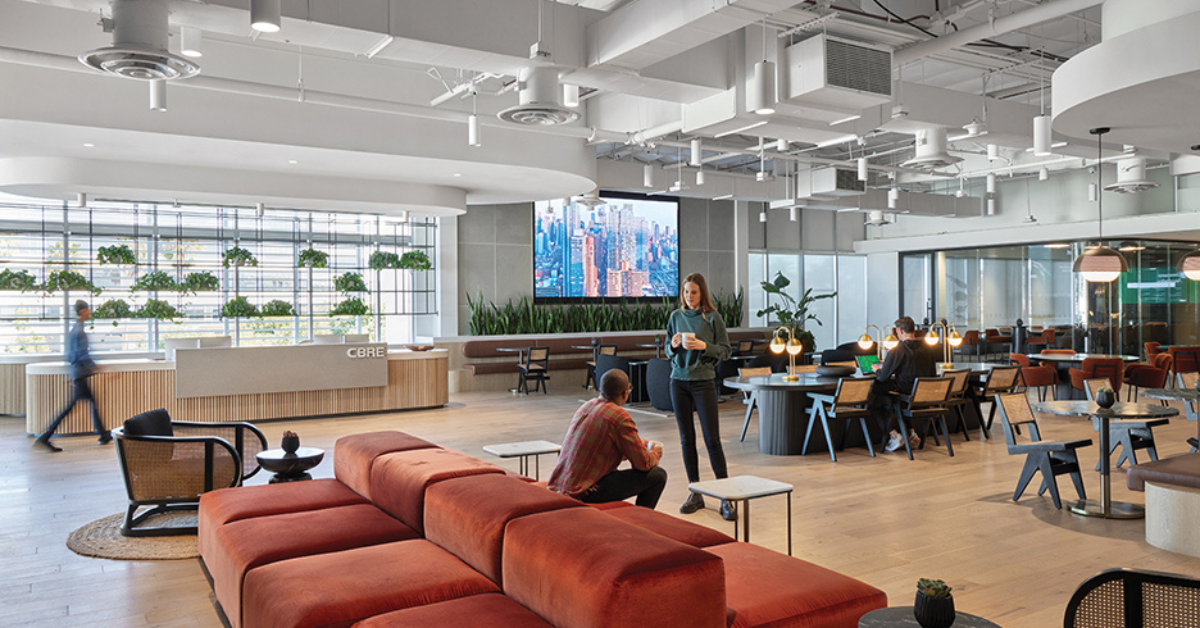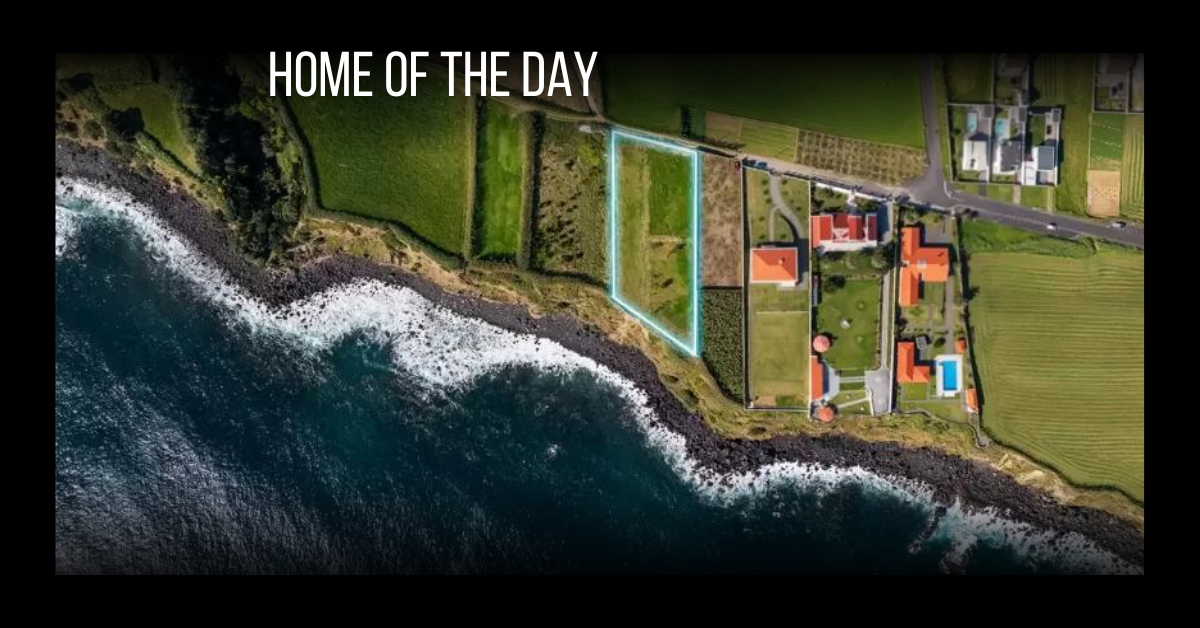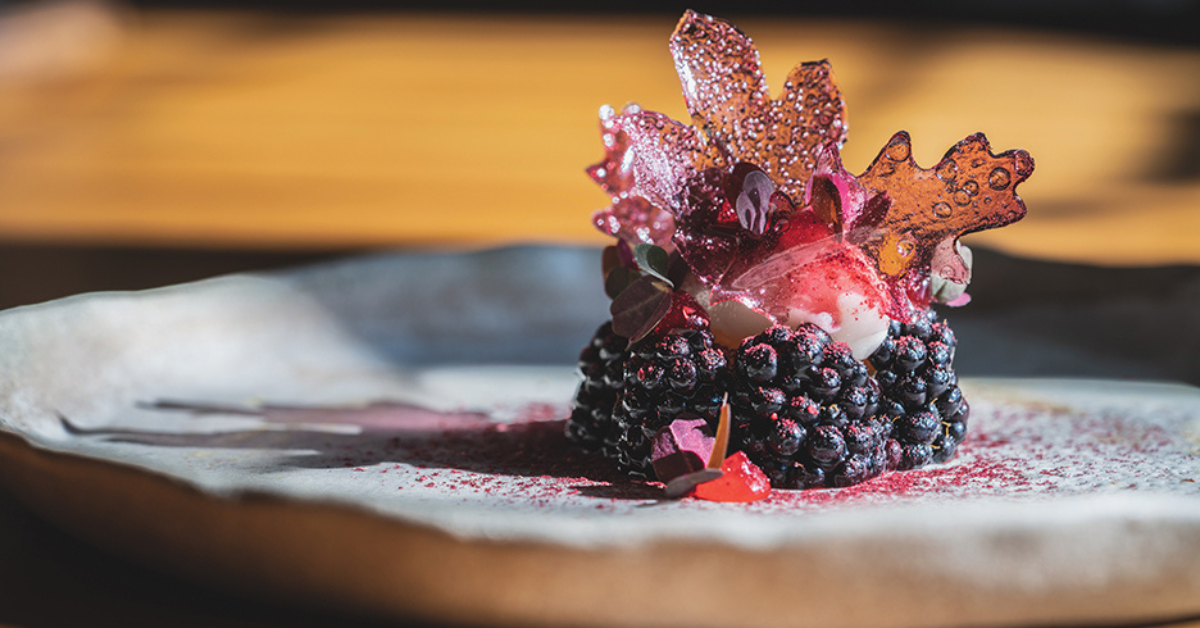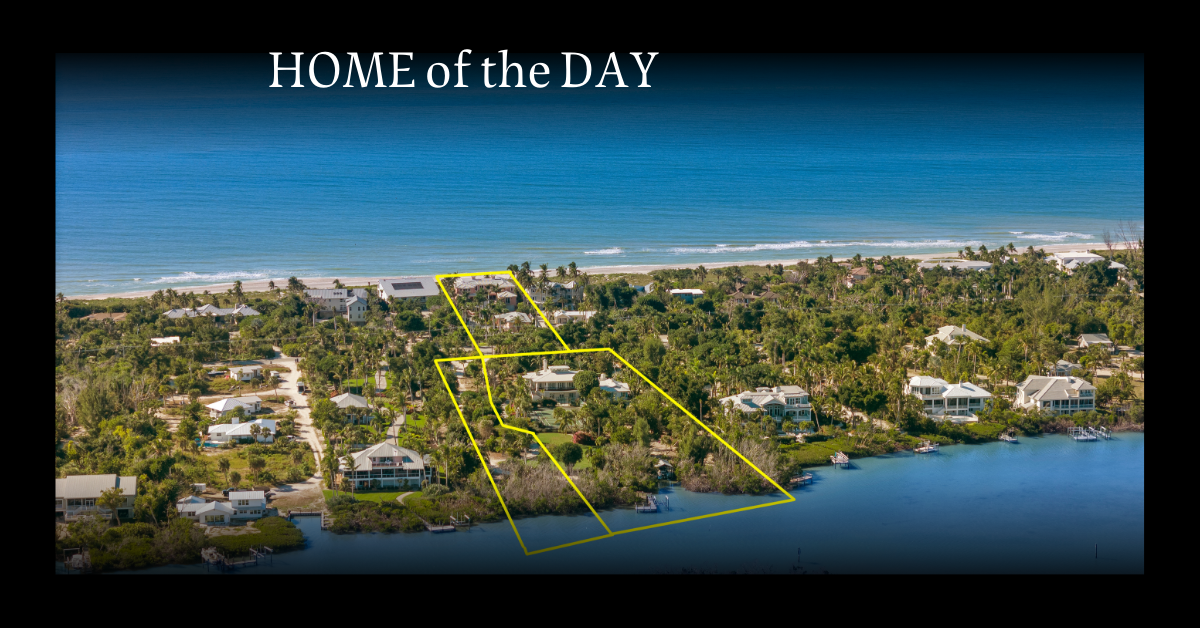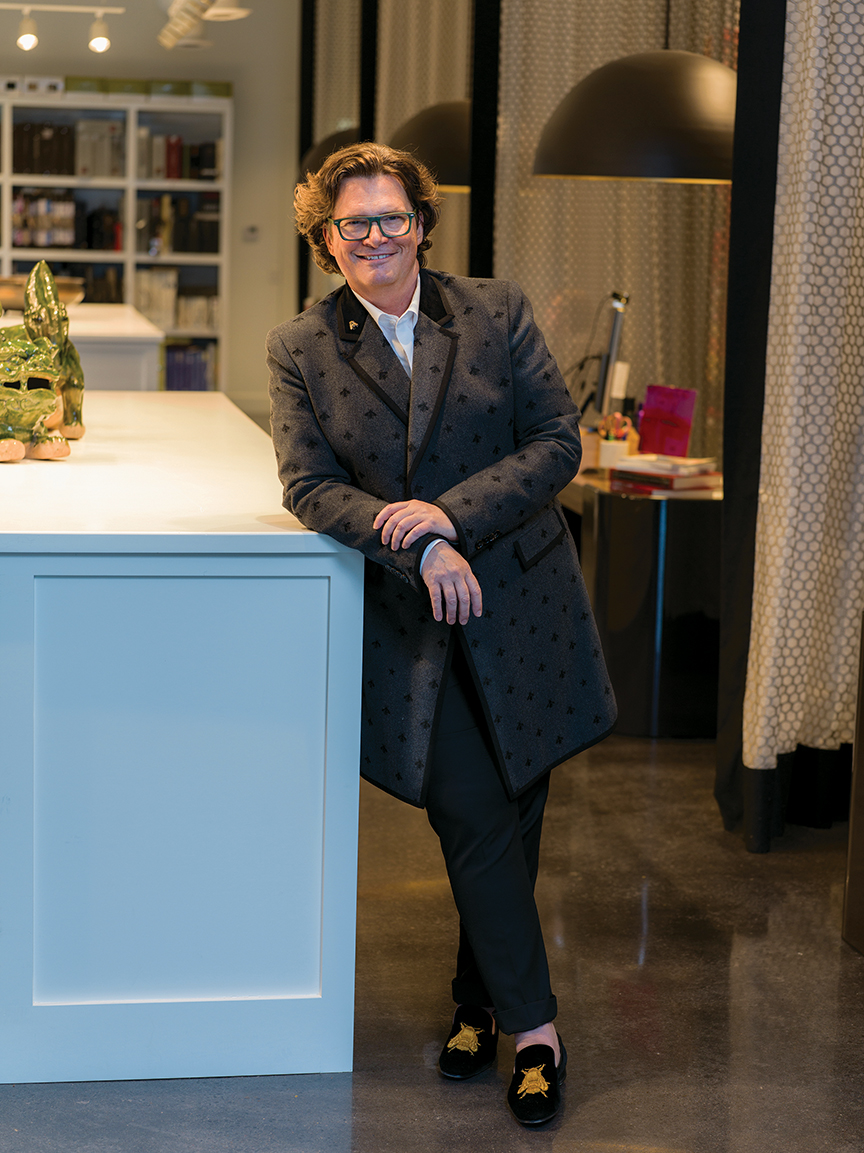
Photos by Mark Jackson/CHROMA Photography.
Designer Chris Goddard grew up in Arkansas in a house full of built-in furniture. As his love for design started early in life, he says this situation “drove me nuts.” Now, as the principal founder of Goddard Design Group, he credits these hurdles, as well as the creative nurturing of his family, for his love of change, which continues to inspire every facet of his work.
It was the need to produce something new every time, and the drive to push himself past his own creative limits, that helped Goddard become a finalist on the most recent season of HGTV’s Design Star: Next Gen.
We spoke with Goddard about his whirlwind experience of creating interior design for TV, and how his reality TV appearance inspired an even deeper love for design than he’d had in 30-plus years.
For those who haven’t watched the latest season of Design Star, can you relay to audiences your method of design?
I’m a big proponent of change, if you’re doing the same thing you did 3 years ago you’re doing something wrong. I never do the same thing twice, so in 30 years we’ve never used the same fabric twice, the same piece of furniture twice — it’s kind of my trademark. I don’t want anybody to have something somebody else has.
What has been your biggest inspiration, since you were young, to work in such a creative field?
I grew up in a very creative family, always surrounded by creativity and the arts. My family, especially my mother and my grandmother, were big on travel and exposing me to as much as possible. So I traveled a lot and spent a lot of time in museums. They would always take me out of school for weeks at a time; they always said ‘the best education was travel and experiencing things.’ I grew up a little globe-trotting kid, seeing the world, which was wonderful and super inspiring.
You received both design and business degrees in college. Have you found this type of structured education helpful as well?
I’ve found that having a business degree really makes a huge difference. Most designers are creative but can’t always run a business, and I’ve been able to strike a good balance. That’s not to say I haven’t ever screwed up — we all have — but those are called learning experiences.
You mentioned loving to travel, what’s one of your favorite places to visit?
One of my favorite places is Morocco. I try and go once a year. I’m super inspired by the colors and textures, anything that’s handmade. When you have something that’s made by hand, at least one thing in your house, it gives your house a soul and gives the room a sense of place, like it’s always been there. That’s my whole deal, creating timeless rooms. I don’t want anything to look like it was stuck in time, and the key to doing that is layering in parts of the past, present and modern so you get something that never really goes out of style.
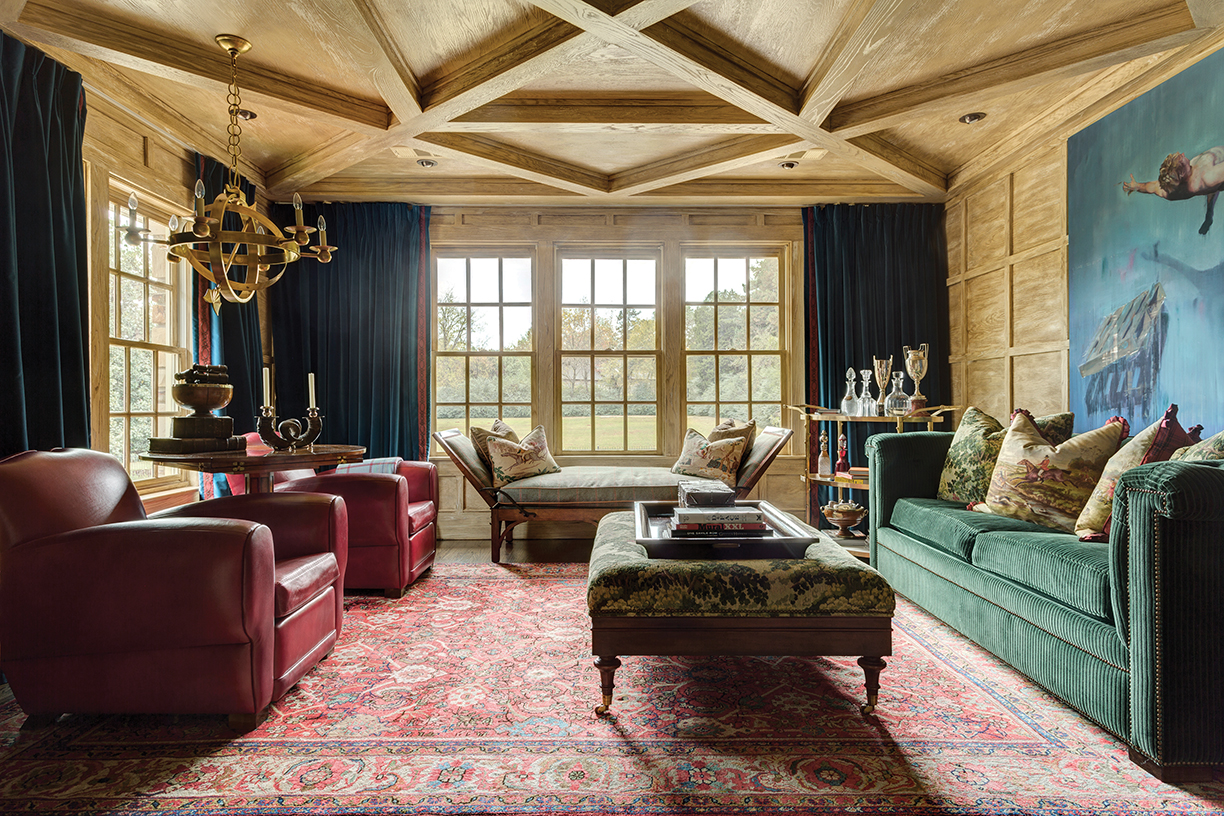
A traditional Southern estate with hints of modern elegance in Fort Smith, Arkansas.
What is your primary focus when you’re designing a space?
I’m designing for the client, or if it’s commercial, for the space. You want to create an experience that is singular to them. I think the death of most design is becoming a trend or doing anything trendy, so I always try to be very specific in what I’m doing and make sure it’s uber-tailored to the space or the client.
I think as a designer the biggest compliment I can ever get is when someone comes in and says “Oh this looks like the homeowner,” instead of “this looks like a Chris Goddard house.” The biggest compliment is that it’s a reflection of the homeowner or the space.
What was it like to be on an HGTV show? Did you enjoy your time on set?
When I started my business I taught myself how to do everything, how to put on wallpaper, how to paint — to be a good designer you have to have an understanding of all the people that work for you. I haven’t done that [in person] in over 25 years, but [on the show] it all came back to me like riding a bike. … Each episode was like a day and a half, so cranking everything out and then being judged on it was a little tricky. In our career, our clients are the judges and you kind of have an idea of what they want, but when you go into things blind, you don’t know.
For me it was more fun because I got to push myself out of my comfort zone, which I really needed. I kind of looked at the whole experience as an opportunity to reignite my passion for design. It’s easy when I get to the level I am at and get comfortable — and I think I was feeling a little comfortable — which was the reason I wanted to compete. Doing it, I came back and I couldn’t have been more excited about design than I had in my whole life. It was the best experience I could have ever had.
What lessons have you taken away from the experience?
It’s best to go with your first thoughts. If you get too much in your head, it throws off the creative process. Don’t be afraid to try anything new. The main thing [I learned], though, was to trust my gut, be authentic and keep pushing myself. And to learn something new. I learned so many new design tips, technology tips — everyone had so many things to share. It was nice to just be able to soak it all in.
How have things progressed since going back to the firm? Any big plans for the future?
I’m excited to see what happens in the next few years, as design is having a Renaissance. Right now we’re busier than ever, since people have been stuck in their homes and they see things they want to change. They want multifunctional spaces, beautiful spaces, there’s been this huge resurgence in an interest in design. The whole world is once again interested in how they live.
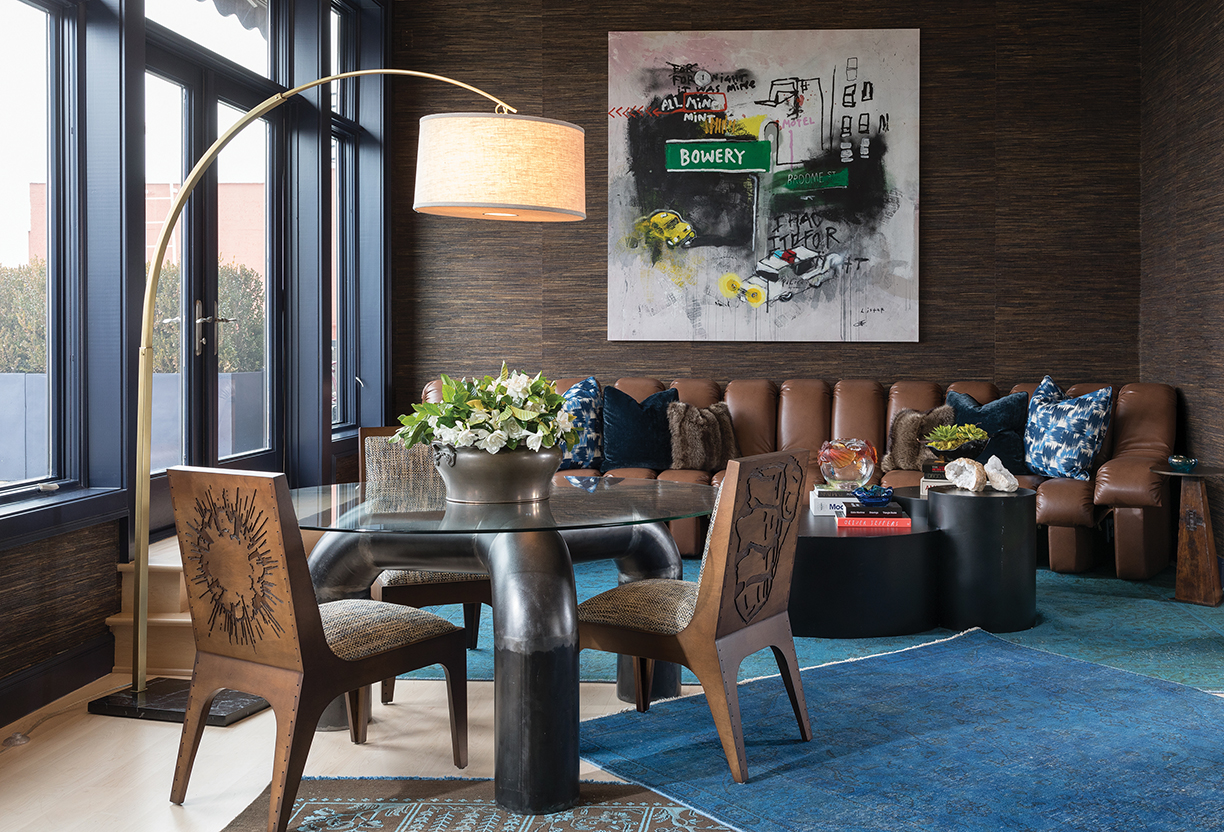
The design style of this home evolved from Spanish Mission into an eclectic mixture of modernism and neoclassical, created through thoughtfully curated collections, from vintage Chinese rugs to contemporary art.

A key component to the design of this Fayetteville penthouse was the incorporation of pieces from the client’s extensive modern art collection, seen above and below. “It was a lot of fun to pull modern furniture and art together to create a new space that still resonates our client’s unique, eclectic personality,” according to Goddard Design Group.
Top photo by Rett Peek Photography.
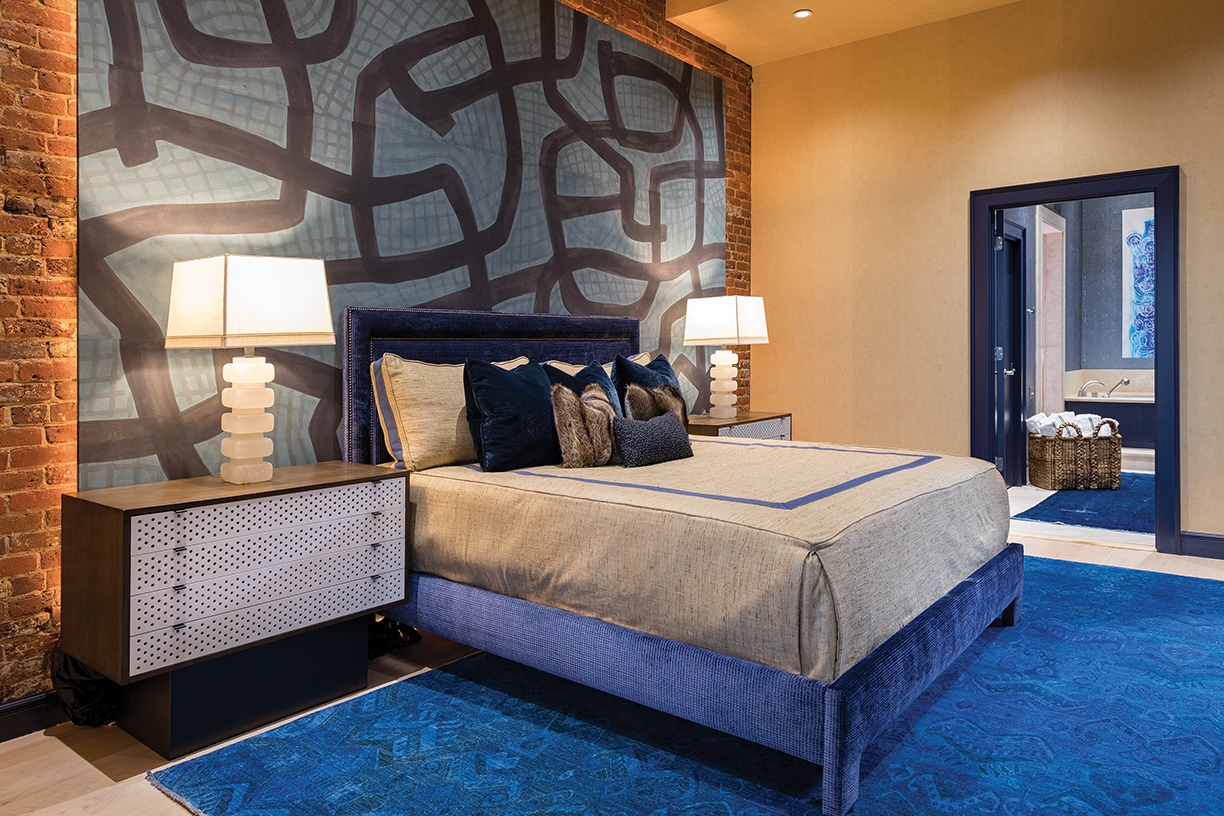
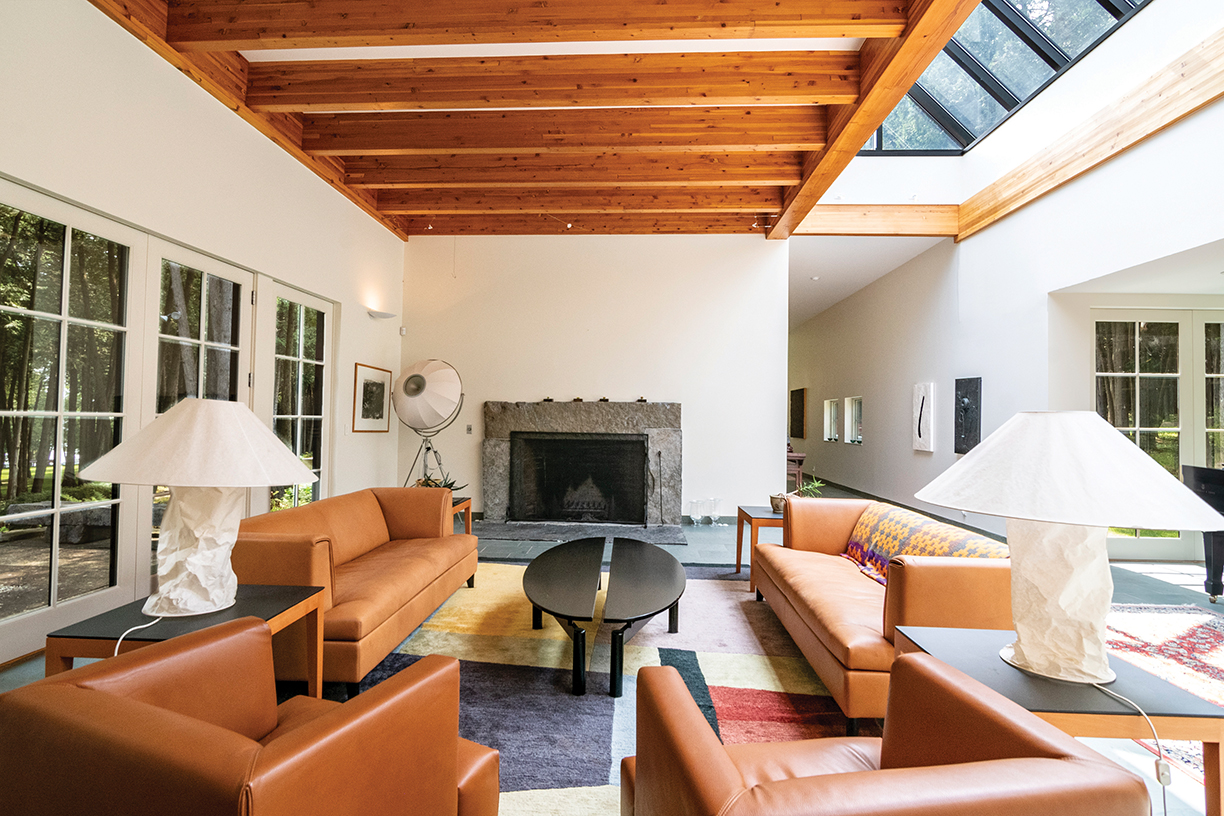
On one of the largest contiguous parcels in the NY Champlain Valley, this 431-acre farm and custom 8,000-square-foot waterfront home showcases mountain views on 646 feet on Lake Champlain. It offers the very finest custom details.
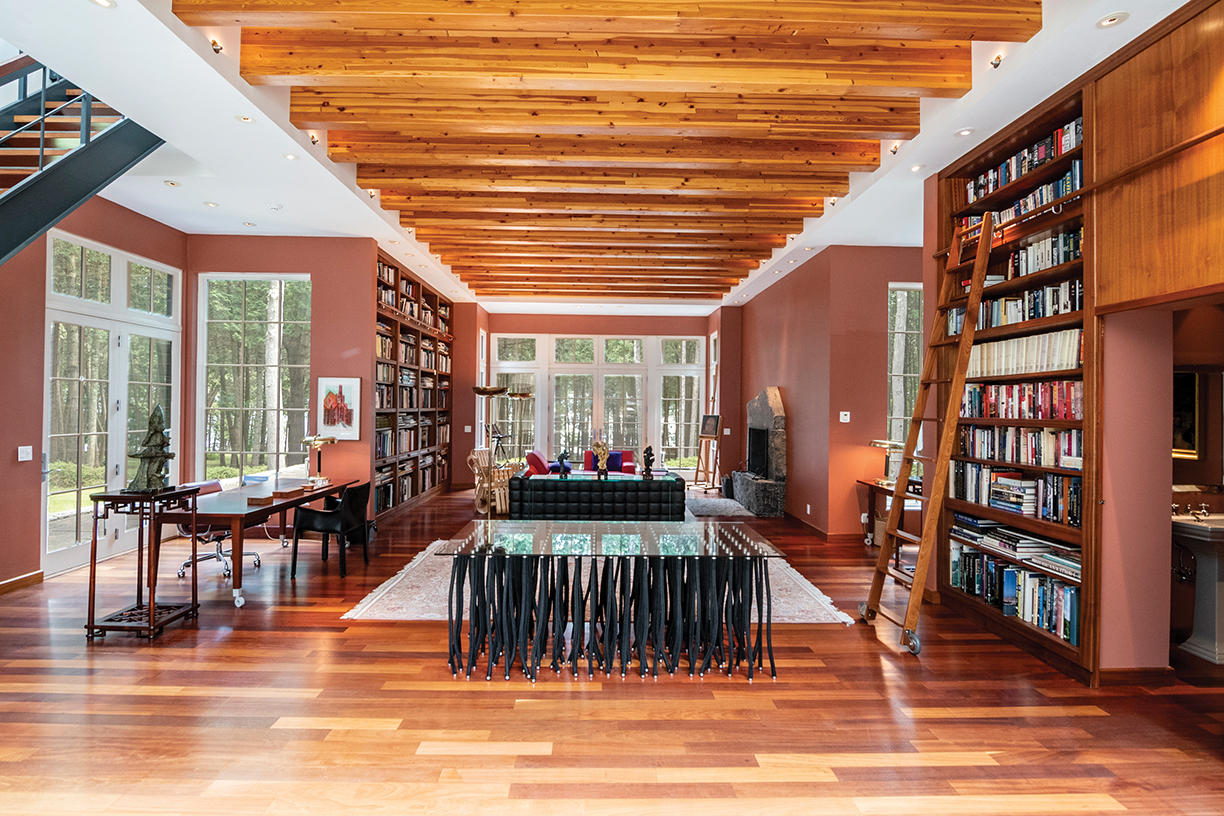
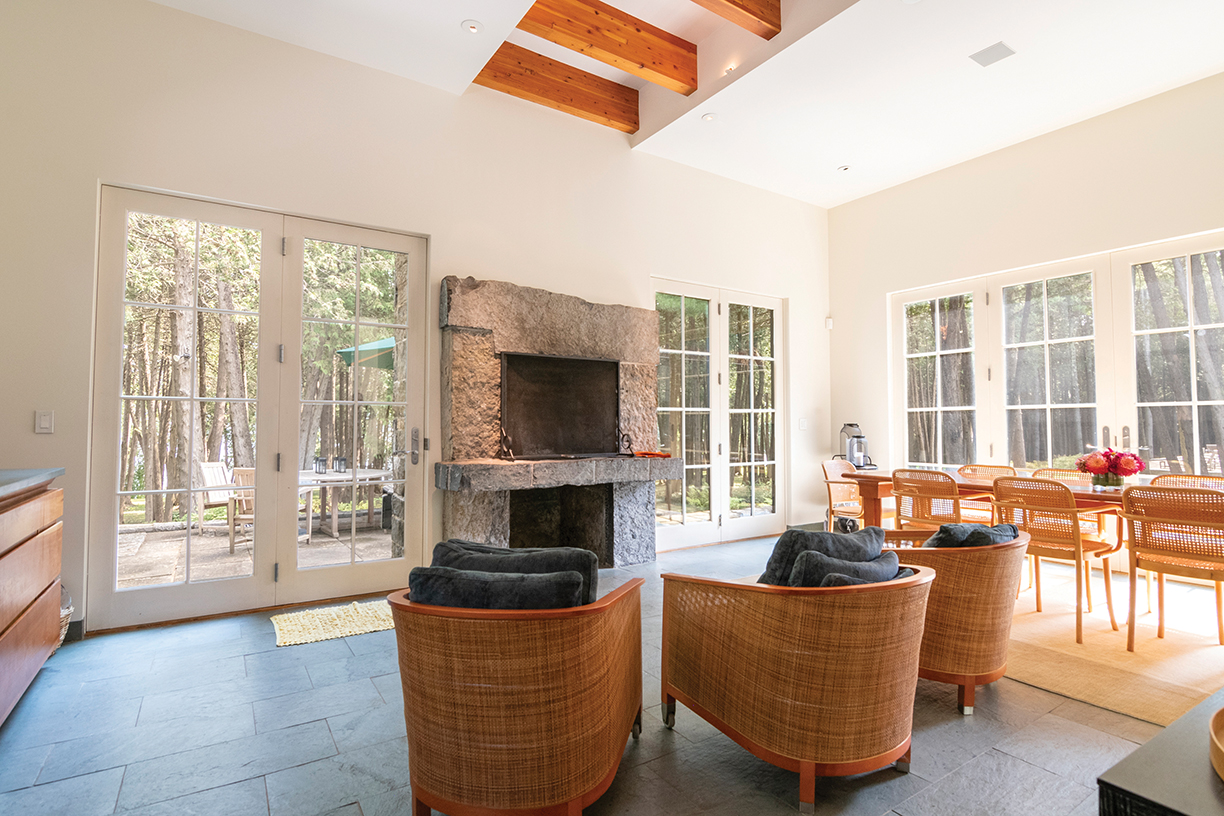
“From the library to the floor-to-ceiling windows, you feel as though you are outside in a gorgeous glass room looking through a filtered view of the manicured mature cedar trees at Lake Champlain and the Green Mountains,” says co-lister Jodi Gunther of Berkshire Hathaway HomeServices Adirondack Premier Properties, who is listing the property with Margie Philo. “In the media room and dining areas there are completely different views of Lake Champlain, but my favorite is the main suite with oversized windows that swing open for amazing Adirondack air and a higher vantage point.”
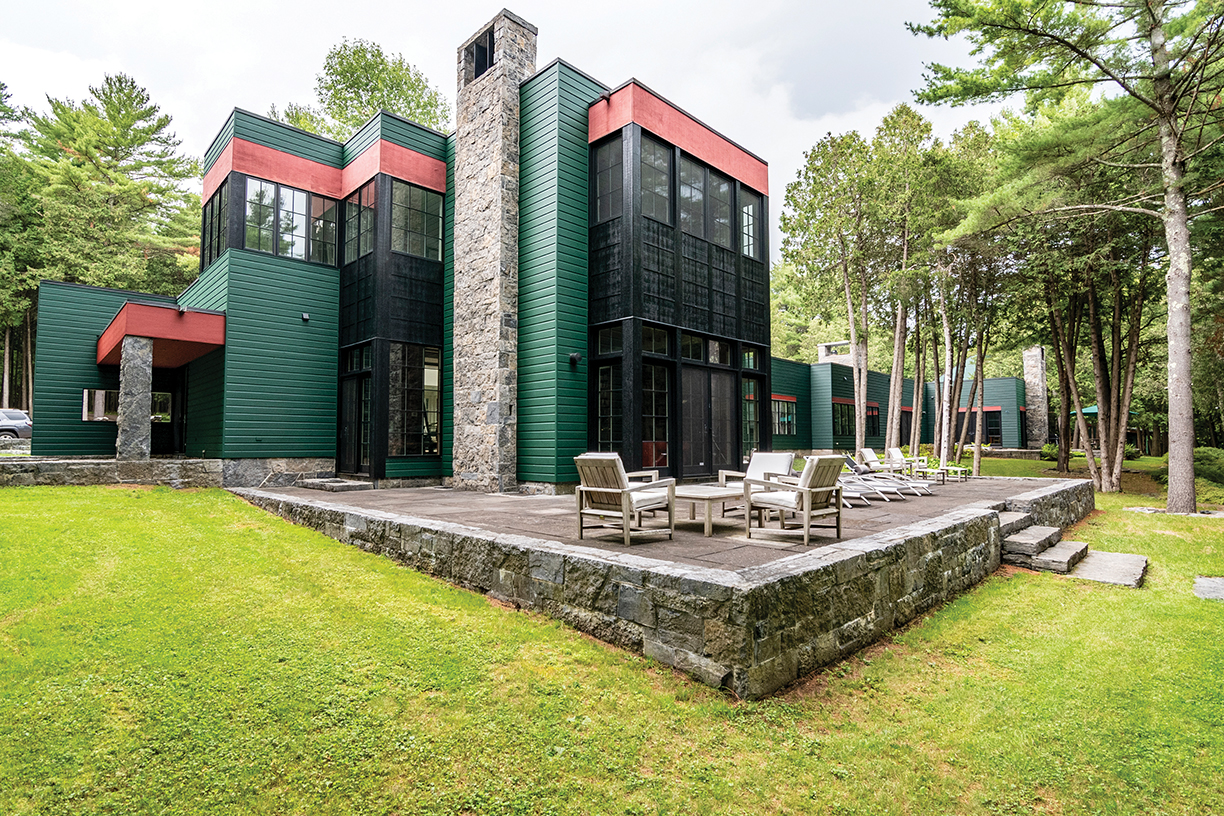
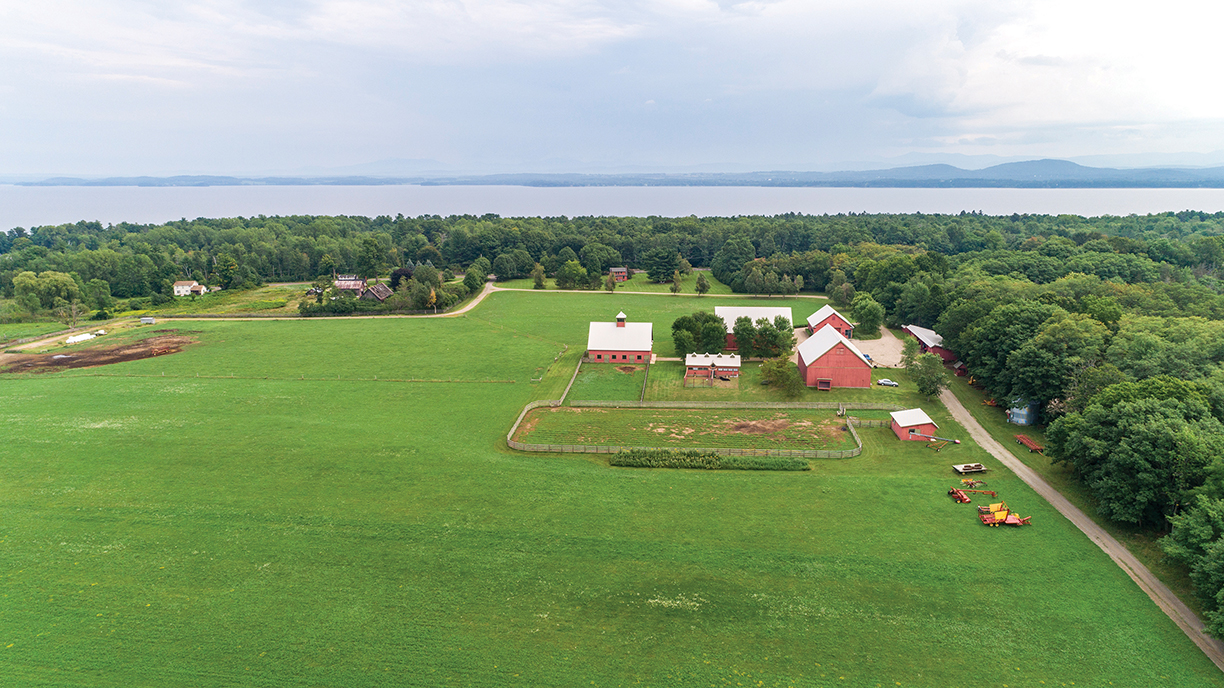
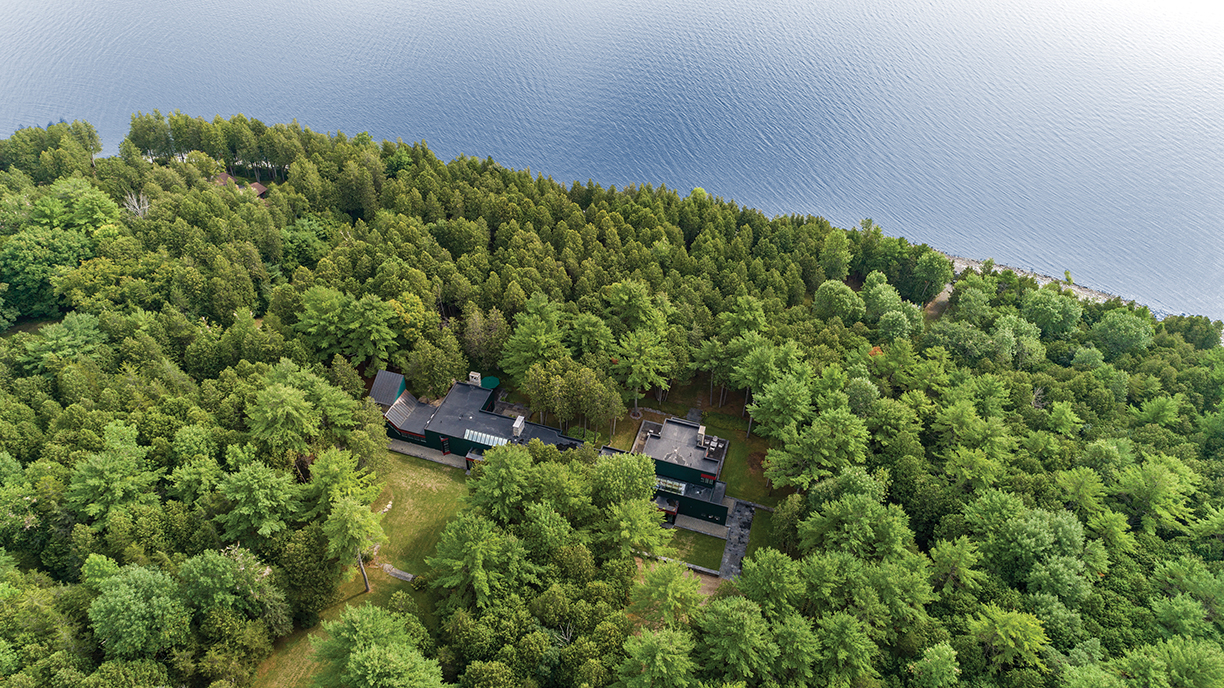
The property, listed for $9.5 million, boasts a totally renovated working 10-building farm, including a horse barn, hay barn, cow shed, a renovated year-round farm home, old slate gable roof barn and more.
It is even equipped with an underground water distribution system to the buildings, high speed internet, and a security system.
It is only minutes to the ferry to Vermont and includes a 2,000-foot grass runway for a serene and safe getaway.
To learn more about this proeprty, contact:
Margie Philo and Jodi Gunther
Berskire Hathaway HomeServices Adirondack Premier Properties & Adirondack Realty
O: 518.523.3333 C: 518.576.9840 Margie@adkpp.com www.adkpp.com
When it comes to kitchens, the popularity of all things smart and sanitary is soaring, as consumers gravitate toward antimicrobial features.
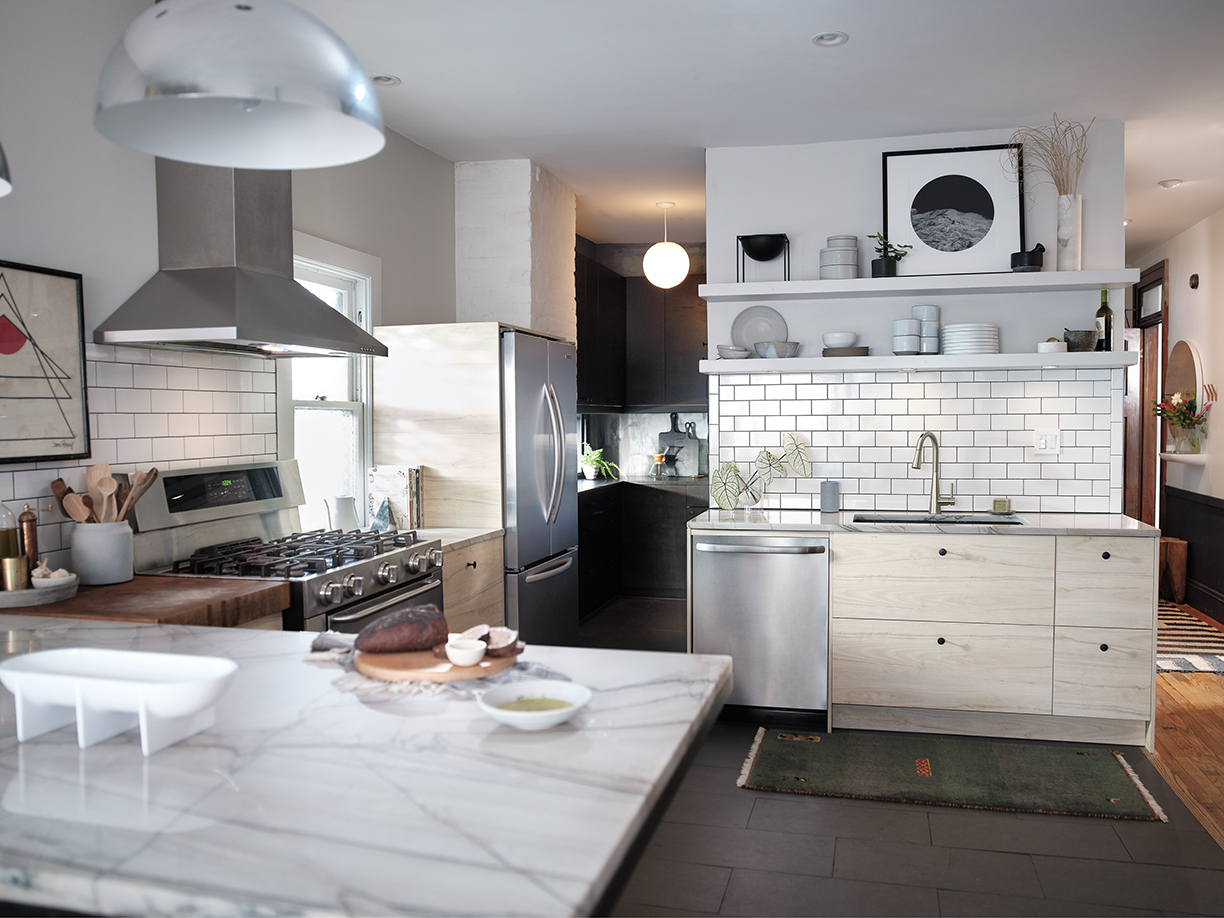
Almost a sous chef, innovative, hands-free faucets such as U by Moen fill pots with exact amounts of hot or cold water or anything in between.
Seemingly overnight, touchless faucets, easy-open drawers and an ever-growing array of kitchen tech morphed from “nice-to-have” amenities to “must-haves” as the desire for cleanliness and safety eclipsed convenience.
Indoor air quality, purified water and clean surfaces rank high with consumers. Before the pandemic, interest in wellness at home was on the rise; now, amenities that bring a hygienic benefit, particularly in the kitchen, top wellness demands. A desire for simplification with easy-to-clean cabinets and counters along with healthy living are micro themes expected to steer product development and design in the future, according to the National Kitchen and Bath Association.
Even trusted materials such as wood, cork and brass are now considered for their capacity to shed germs or resist contamination. “All our faucets are solid brass construction and therefore, by the very nature of the metal, have additional antimicrobial properties,” points out Noah Taft, senior vice president of marketing and sales at California Faucets, noting the benefit of brass over less costly materials

Pure Water
As the desire for healthy homes builds, so does interest in water quality. Filtration has become an important focus, according to experts at Kohler, who say more than 75 percent of customers already take measures to filter their drinking water. In January, Kohler introduced a four-stage reverse osmosis purification system designed to fit in the cabinet under the kitchen sink. The system reduces contaminants, including lead, mercury, chlorine, bacteria, virus, arsenic, copper, fluoride and more. With a capacity of 27.5 gallons per day, it would replace approximately 200, 16.9 oz. bottles of water.
Water Appliance
Sinks used to be, well, just sinks, until Rohl and other manufacturers elevated the status to “water appliance.” According to estimates, the kitchen sink used to be frequented 10 to 30 times a day. Now, after weeks of sheltering at home and a hyper-focus on handwashing, the sink is getting more use than ever and receiving lots of scrutiny regarding design, ease of use and even appearance.
“Kitchen sinks and faucets are on the front lines of keeping a home clean and safe — used continuously for food preparation, hand and dishwashing,” says Edyta Drutis, director, brand and communications, at Blanco North America. Blanco’s Silgranit stone-like sink material is nonporous, resistant to stains, scratches, chips, acid and heat. Acting as a shield against dirt and contaminants, it reduces bacterial growth by 98 percent. The hydrophobic surface pushes away dirt and water, so it drains easily and cleans with soap and water or baking soda.
When it comes to sinks, bigger continues to be better. Even before the pandemic, experts at the National Kitchen and Bath Association noted increased demand for large sinks to accommodate tasks as diverse as washing fresh produce and jumbo pans, to babies and the
occasional pup.
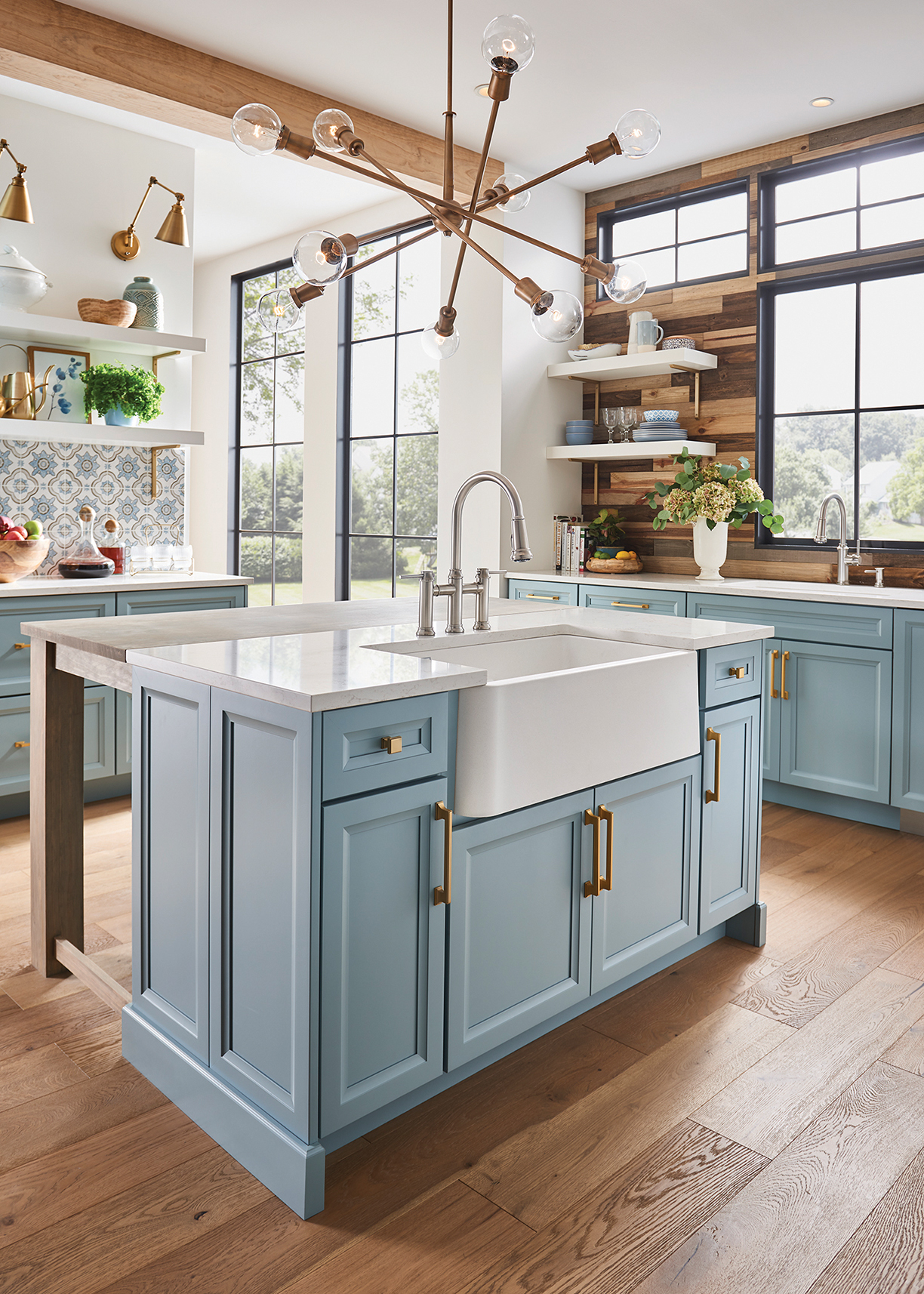
More Power Per Drop
Look for faucets designed to do more than deliver water. Lenova introduced a model that takes washing produce or the dog’s bowl to the next level by integrating ozone into the flow. Recognized as a safe, non-toxic way to kill viruses, bacteria, mold, yeast and algae within seconds of contact, aqueous ozone has been extensively tested and clinically proven, according to Lenova. Not only does it sanitize surfaces, but it can be used to wash produce, and it even removes pesticides.
Adding more cleaning power to each drop, particularly for sprays, is another objective for manufacturers. Kohler recently introduced options such as a faucet sprayer with nozzles aligned to create a forceful blade of water to sweep away stuck-on food. Another, a soft spray, preps berries without bruising. Moen optimized its sprays to deliver 50 percent more spray power while containing the splash — great for messy pots and messy hands.
Look Ma, No Hands!
Touch-free faucets have been around for a few years. In the first versions, sensors would activate the flow in response to a motion. Then, voice control was added. The most recent innovation enables homeowners to activate faucets via Alexa or Google Home. Turning the water on and off is only part of what U by Moen — a Best of KBIS 2020 winner — delivers. Instead, it can fill a baby bottle with just the right amount of water at the right temperature or load a pasta pot with precisely four quarts of hot water, freeing the cook for other tasks. Metered dispensing ranges from one tablespoon to 15 gallons, and temperature commands can be exact degrees or merely hot or cold. “Baby bottle” and other customizable presets simplify commands.
Hard As Glass
“Glass tiles are not porous and do not possess characteristics that allow or promote the growth or life of microbes, bacteria, or germs,” explains Jim Stevens, brand manager for Lunada Bay Tile. “Keep in mind that the grout between each tile is porous and does not have these same characteristics. However, grout is usually set down, below the top surface of the tiles, so direct contact is less likely. And grout could be sealed with an antimicrobial sealer to create a safe and sanitary surface.”
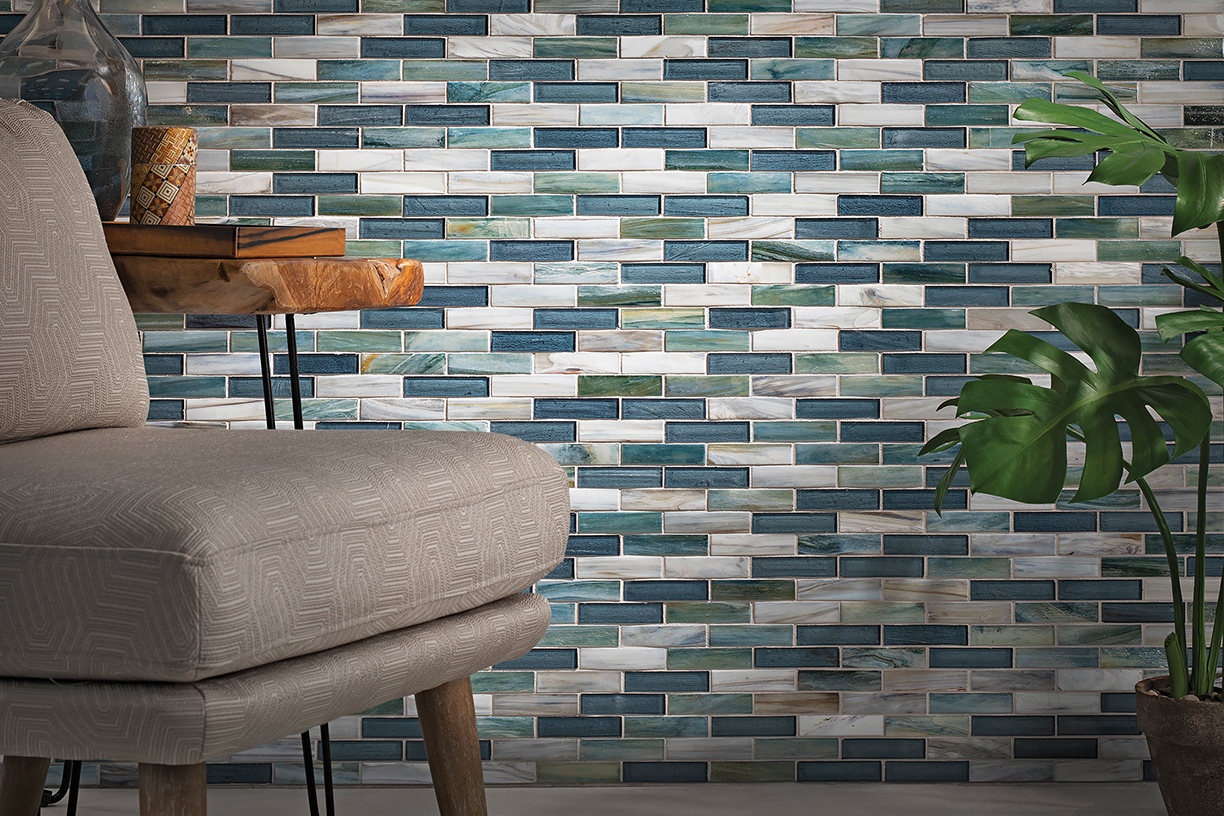
Glass tiles, which are nonporous, also mesmerize.
With summer in full swing, vibrant colors and shining sun make spending long days outdoors a treat. Nature’s textures, sights, and patterns boost your mood and energy, enhancing the feeling of a perfect summer day. Why not bring the outdoors in, and create your space to enjoy a summer state of mind all year round?
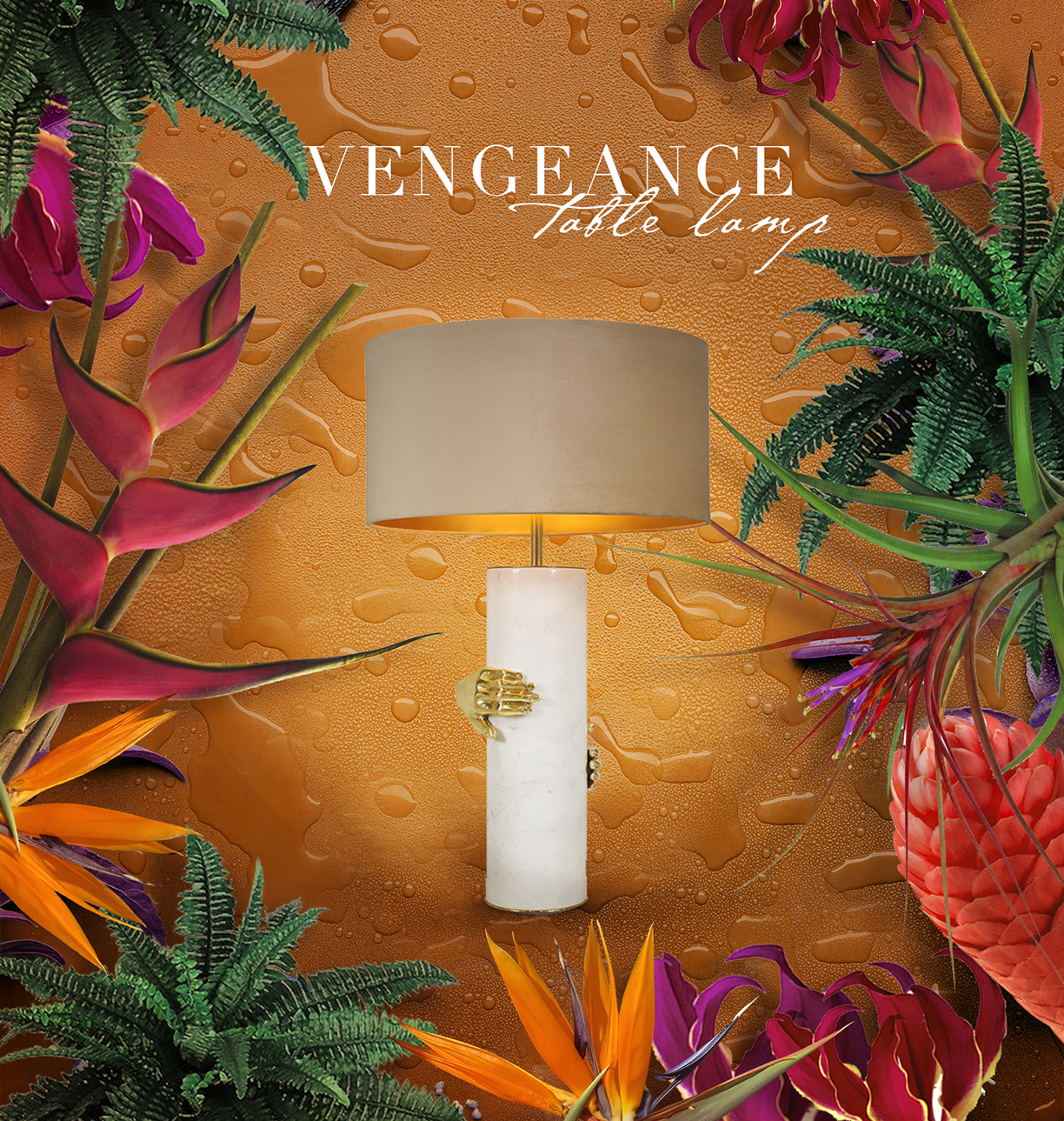
Koket’s artistic and product designers have crafted summer decor perfect for creating an indoor retreat. Forget minimalism, Koket says to go big and go decorative for a maximalist approach to pattern, color, texture, and accessories.
Incorporating natural materials, such as the classic white marble in Koket’s Vengeance Table Lamp, are a perfect way to capture pieces of nature. The shape of the golden hand on the lamp also adds unique flair to the piece.
The vibrant colors of the Seville Pouf from the KK by Koket collection make it a fun, playful accent seat that is sure to add a summer feel to your space. Next to the swirling curves and glass top of the Kiki Side Table, this set-up is the perfect destination for enjoying a summer cocktail.
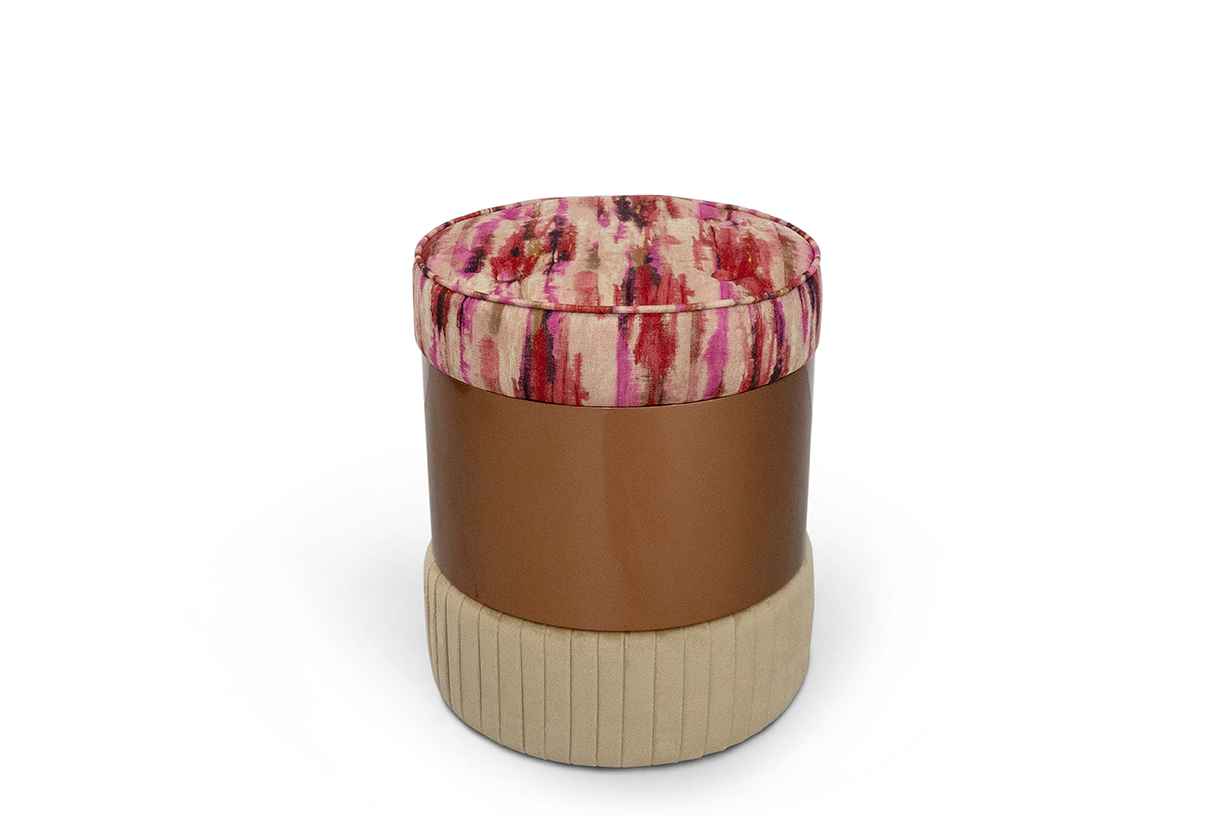
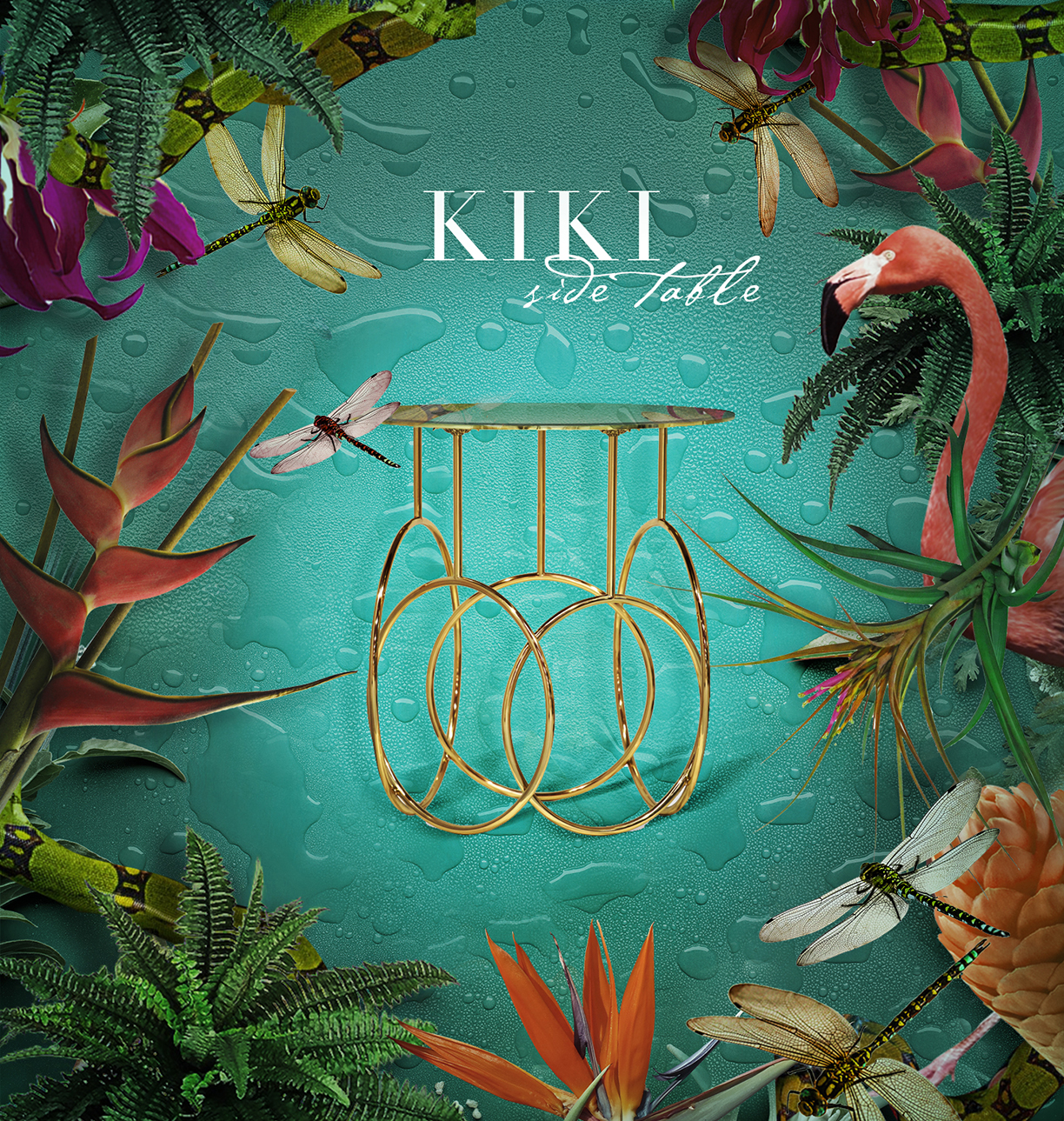
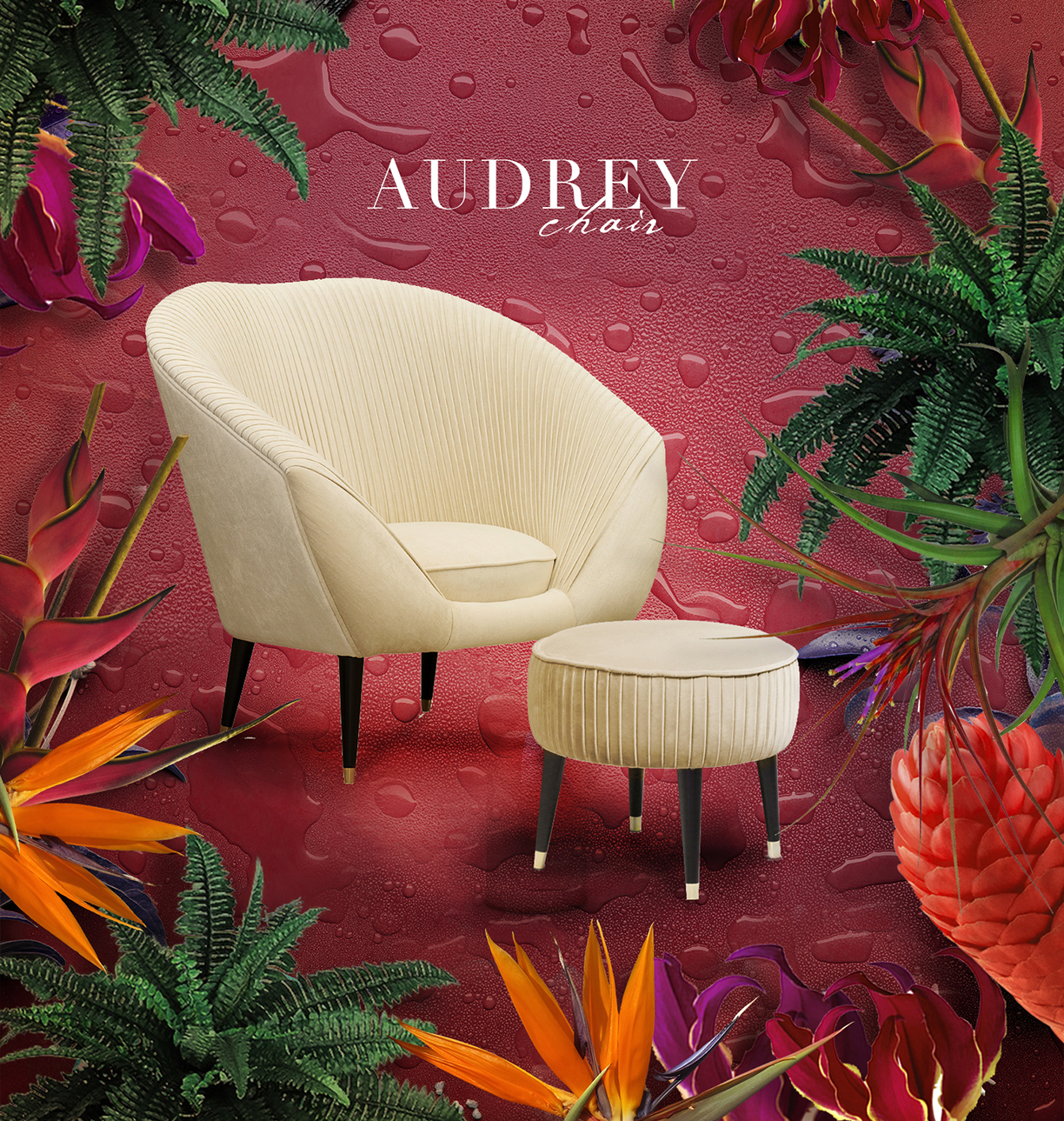
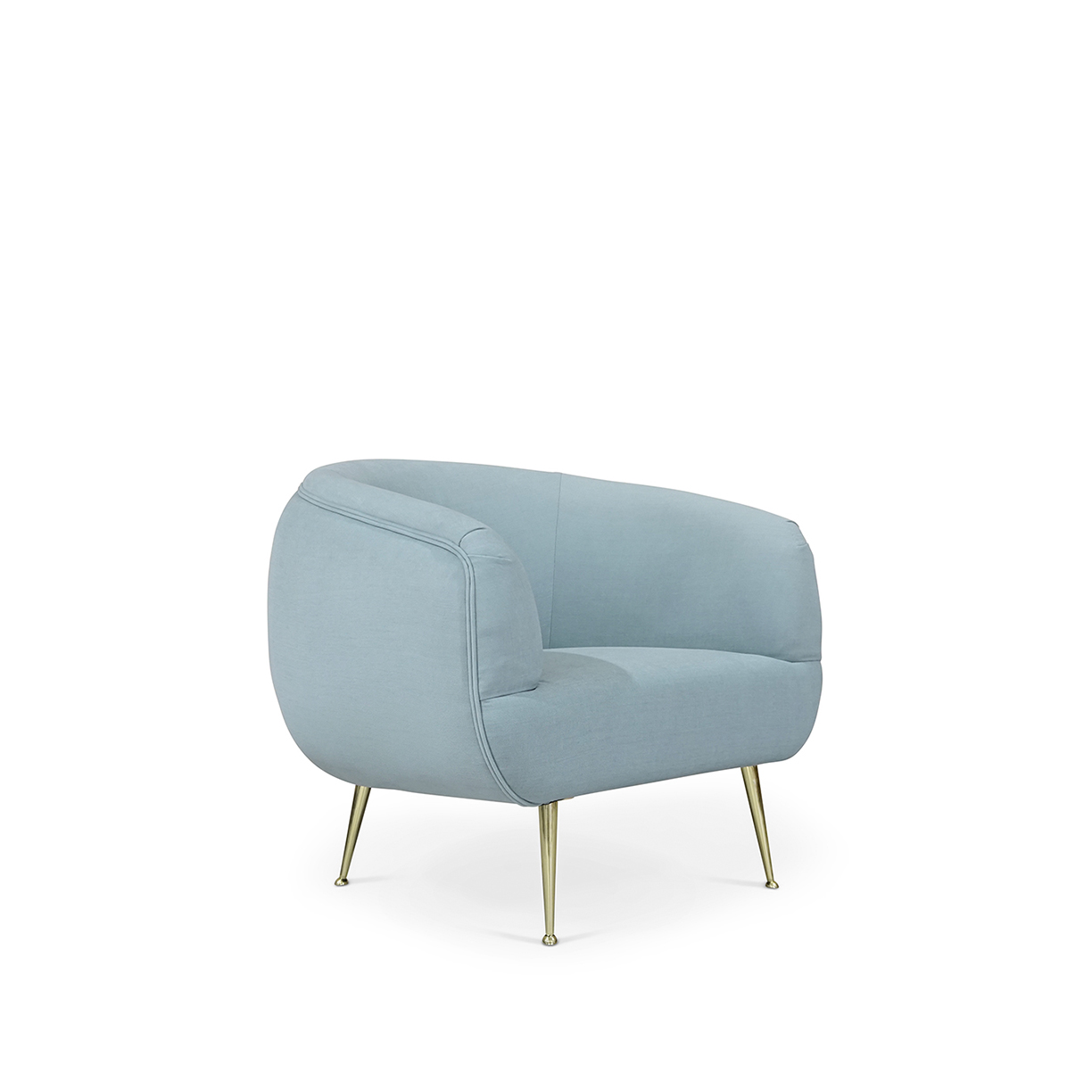
Curling up in the cozy Koket Audrey Chair in your favorite reading corner will make you feel like you are enjoying light summer reading on your favorite beach. Or, bring some of the outdoor summer sky indoors, with the uplifting sky blue color of the Tayma Chair from the KK by Koket collection.
Exotic animal touches can help your space get in touch with the great outdoors. A perfectly placed, subtle piece of exotic decoration will make a statement in your home. Koket’s Serpentine Collection adds allure and glamour to any space, such as the Serpentine II’s apple-shaped mirror or Serpentine Chandelier. Feathers also add a one-of-a-kind, soft touch to pieces. Koket’s natural feathers are combined in patterns of waves, natural stripes, and diamond crisscross, and are available by the panel or as a finish on numerous furniture designs.
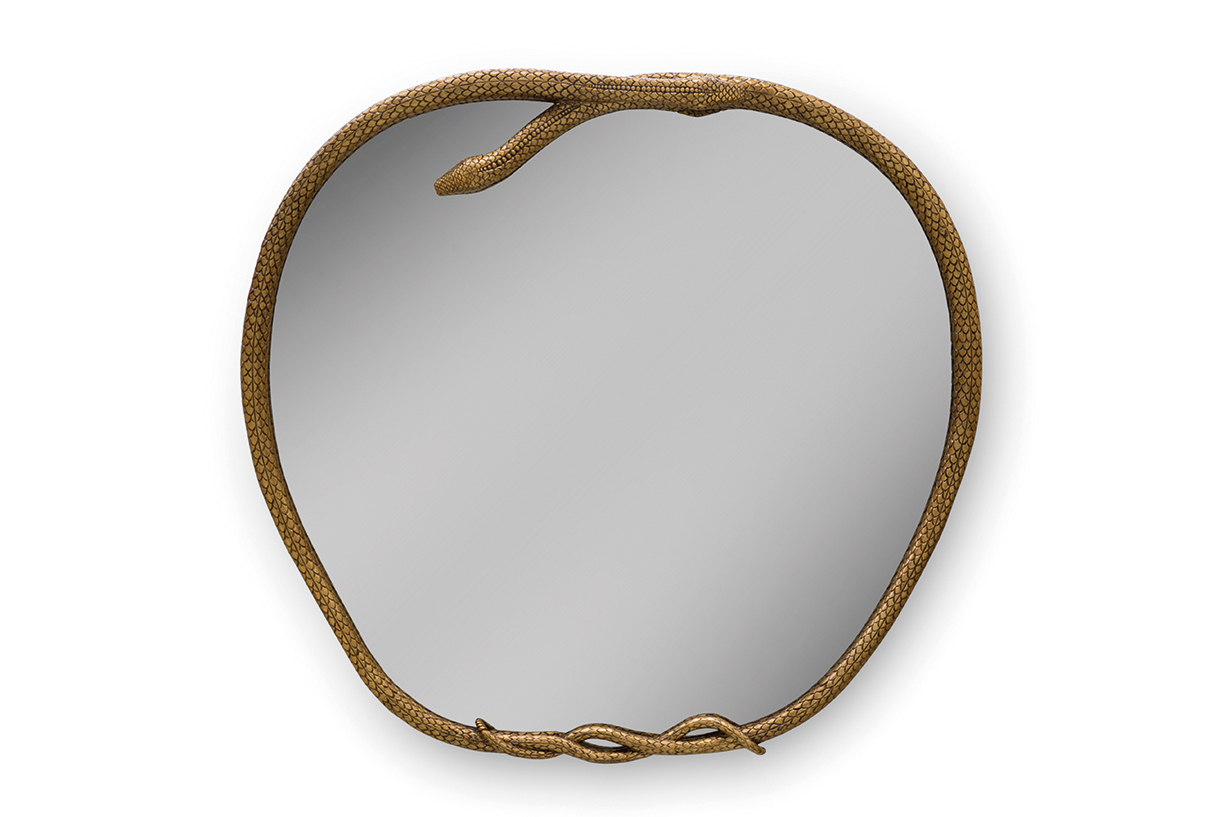
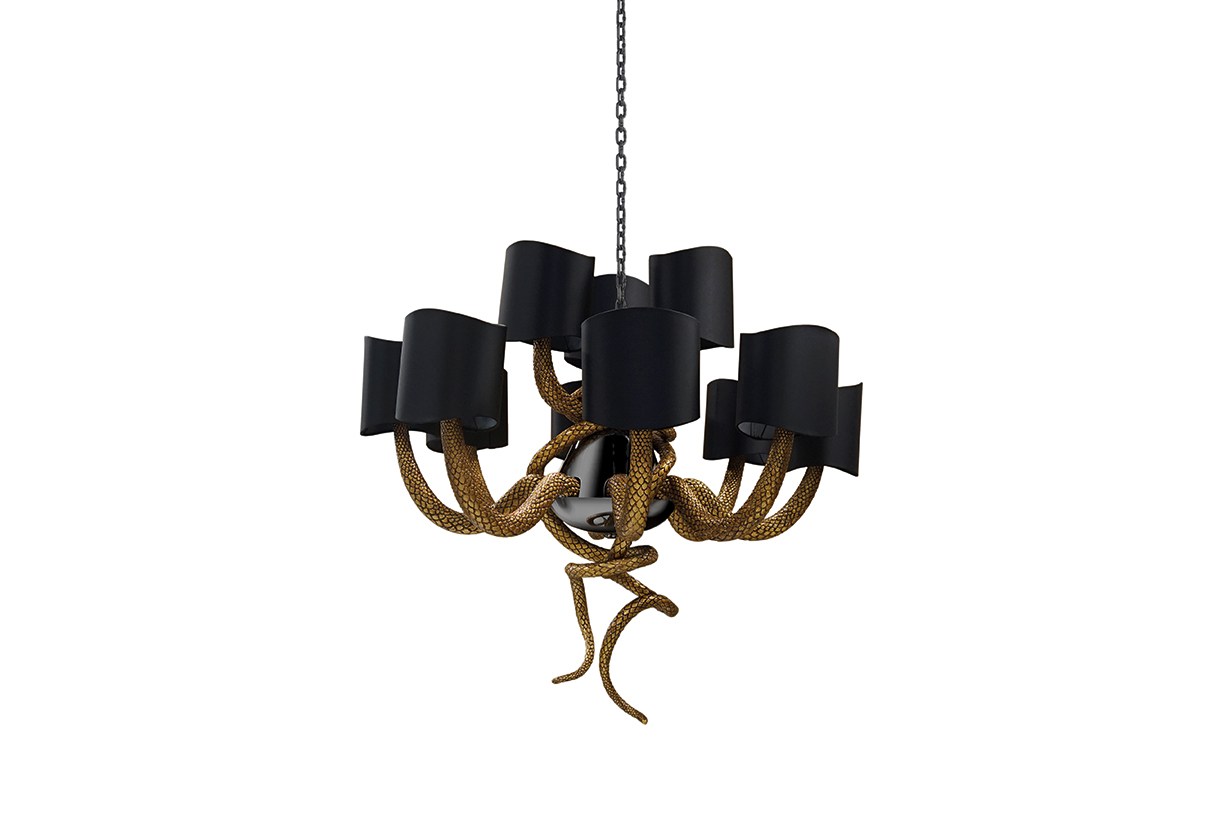
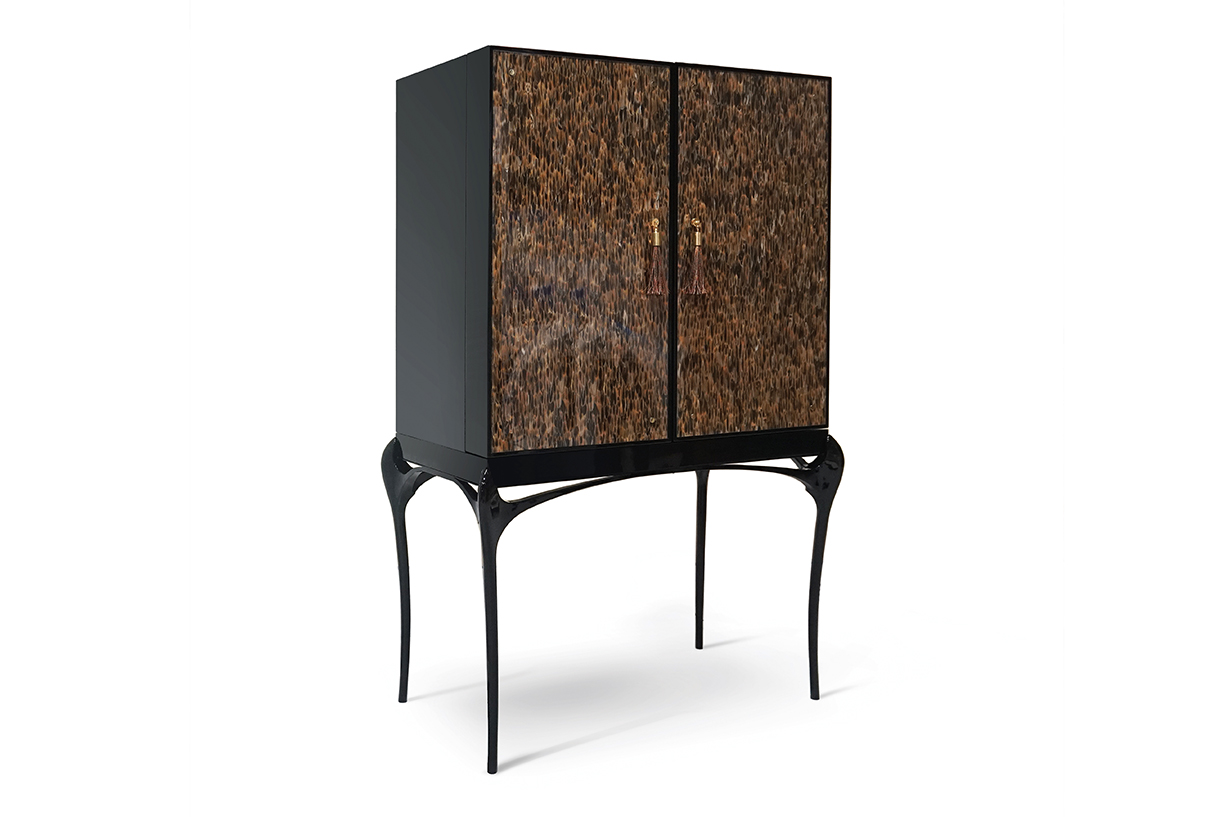
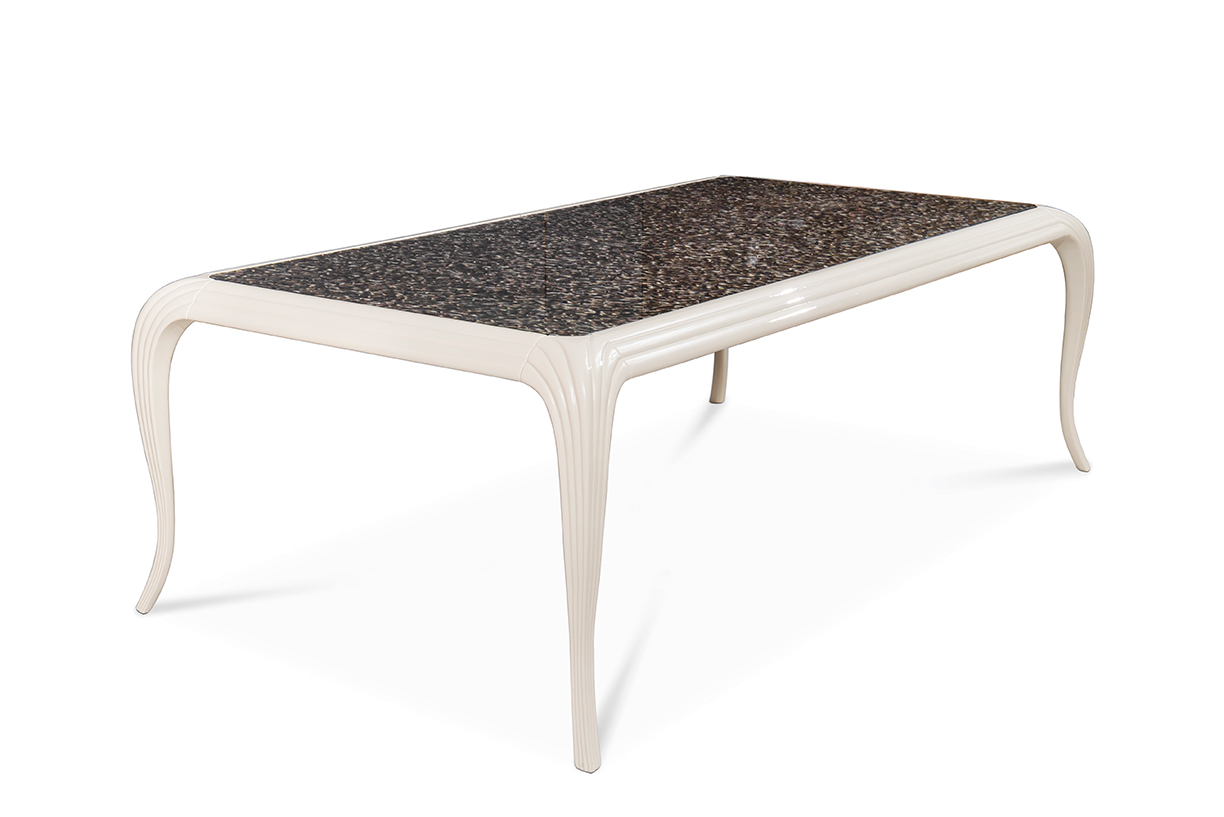
By utilizing bold, summer touches in your interior decorating, you can bet that summer feel will stick around all 365 days of the year.
Photos courtesy of Koket
Amidst the COVID-19 crisis, people and businesses have had to adapt to a “new normal,” with daily life shaken up by social distancing and limited physical contact. Making changes to adhere to guidelines while keeping people safe often requires some creativity, and MY Furniture, a luxury, high-quality furniture retailer, has made it easy for customers to enjoy furniture shopping without ever having to leave their homes.
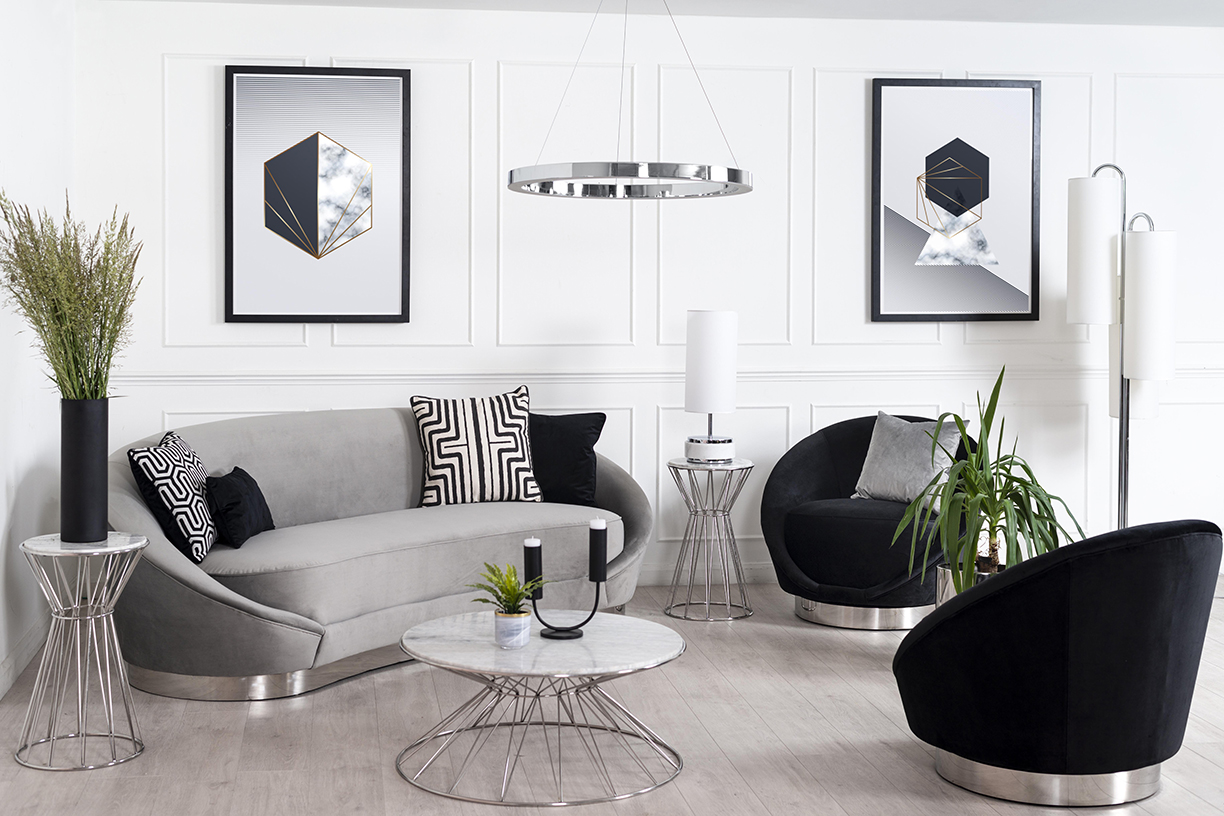
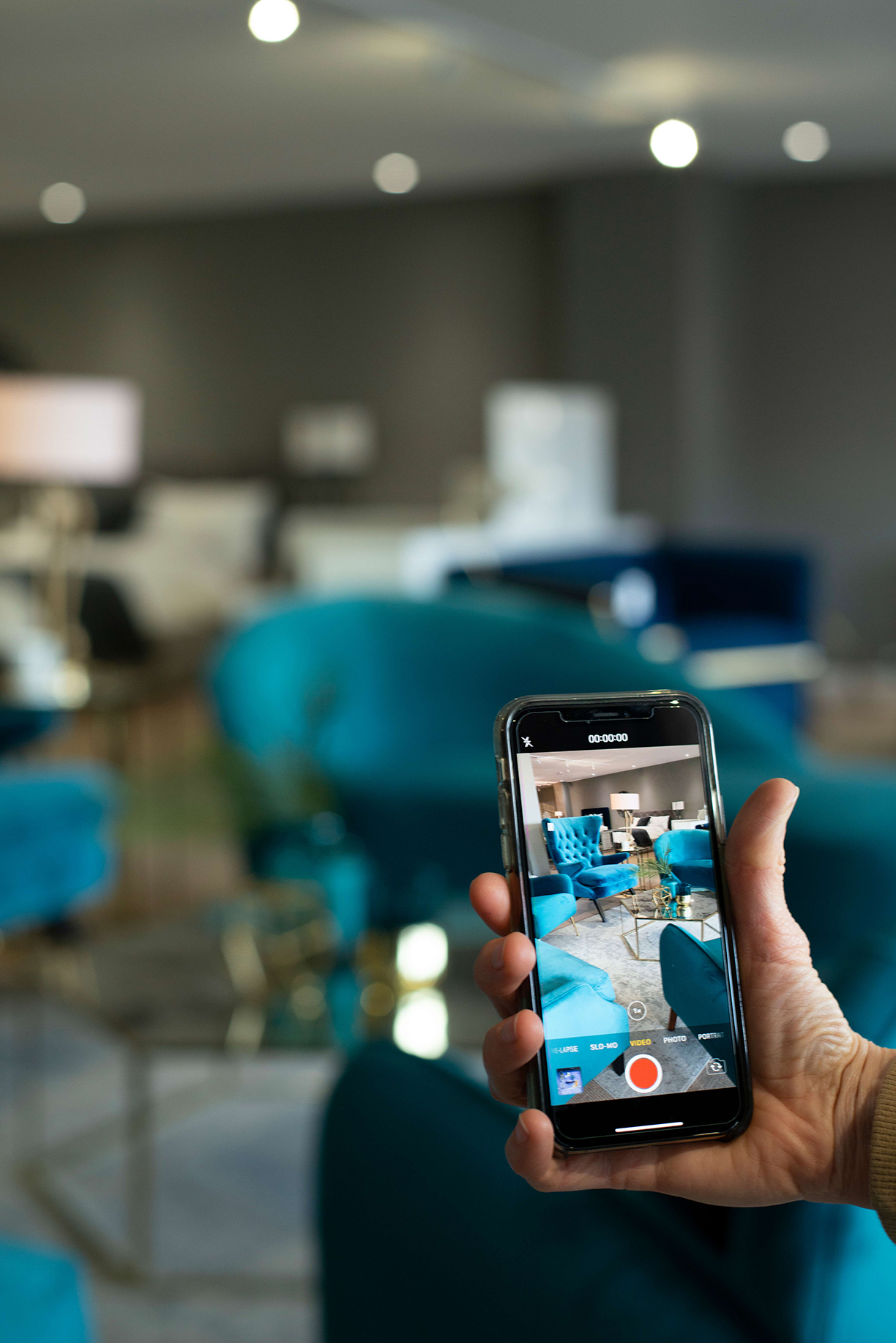
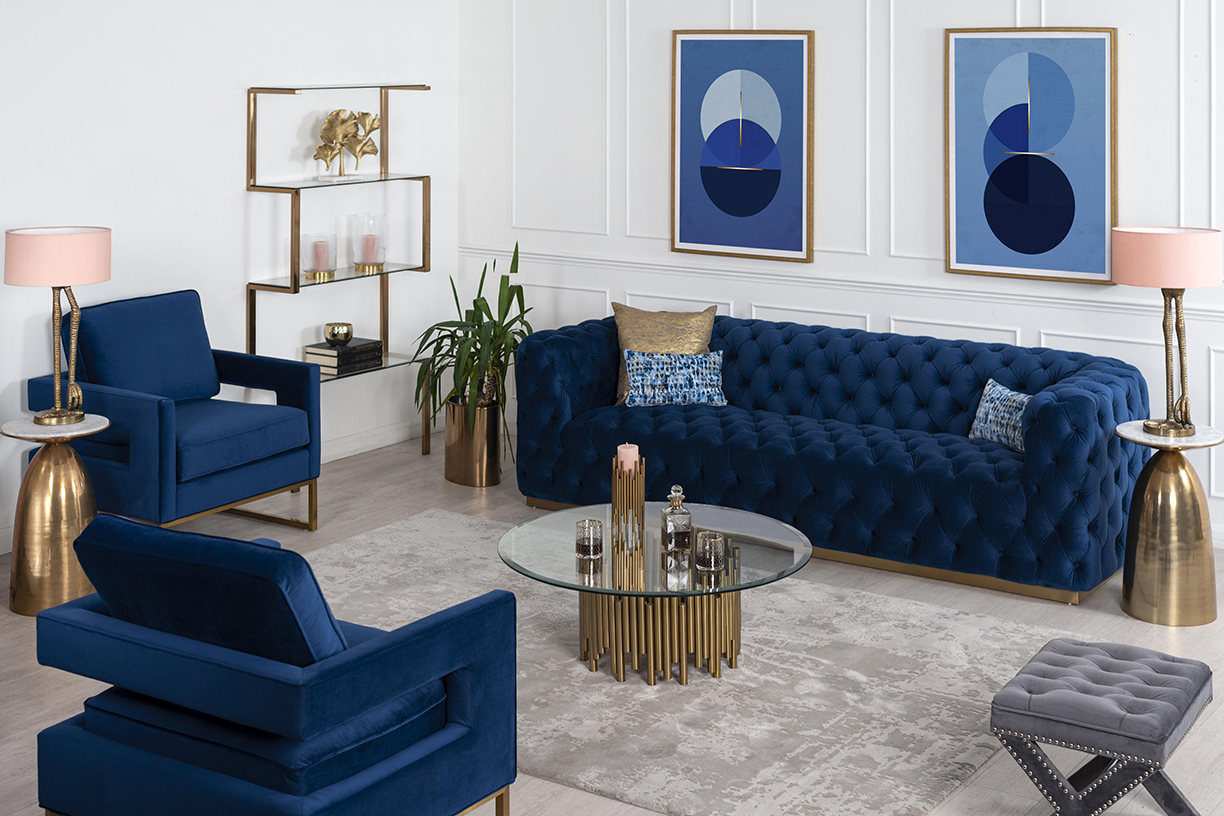
First, MY Furniture introduced a Video Call Facility for customers, a video call-in appointment that allows people to easily visit the company’s virtual showroom. By navigating to the website and clicking the “Request Video Call” button, a member of the MY Furniture team will be able to call the customer at a suitable date and time via FaceTime, Skype, or WhatsApp depending on the customer’s preference to show them the item they are interested in. This is also helpful for busy customers who would rather skip out on viewing furniture pieces in person in a showroom.
To control the flow of customers in and out of their showrooms, MY Furniture has also introduced an appointment system, adhering to social distancing and capacity guidelines. Deliveries are handled by couriers that deliver to the front door, and not inside the property, to maintain cleanliness.
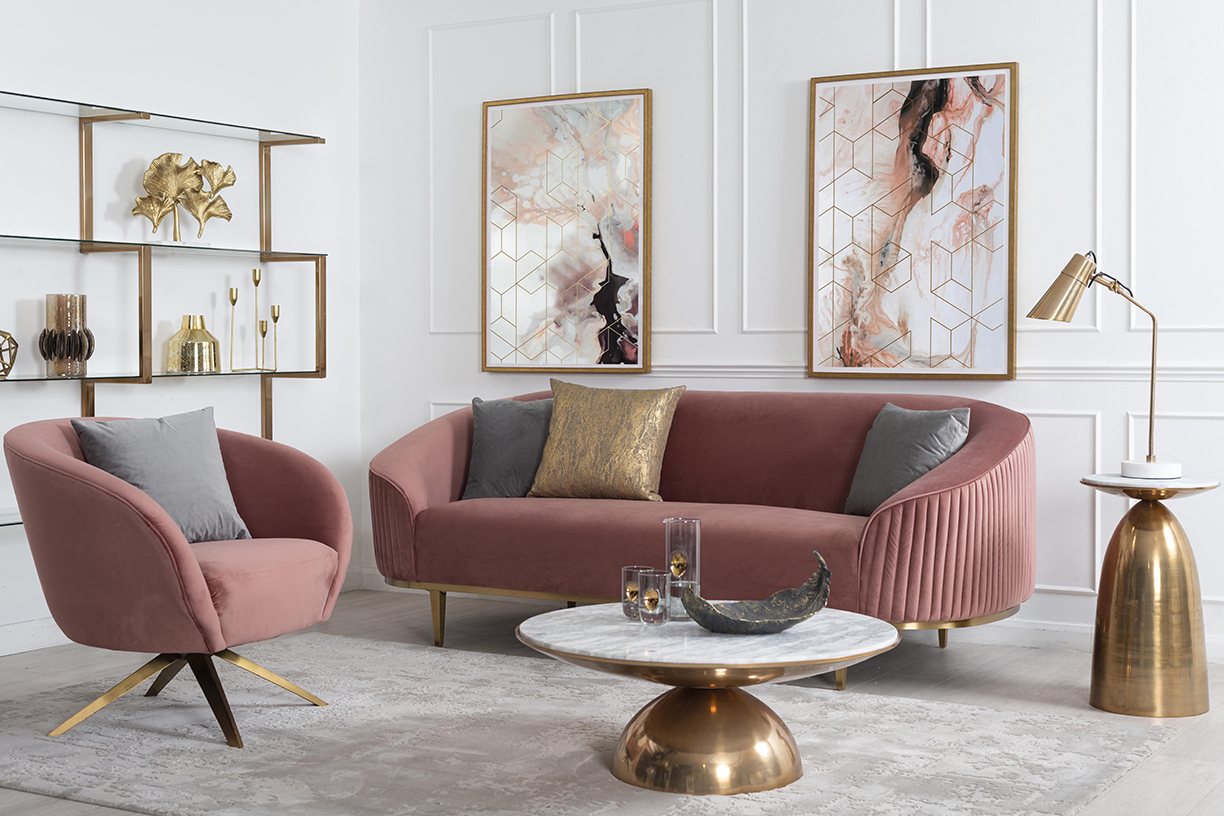
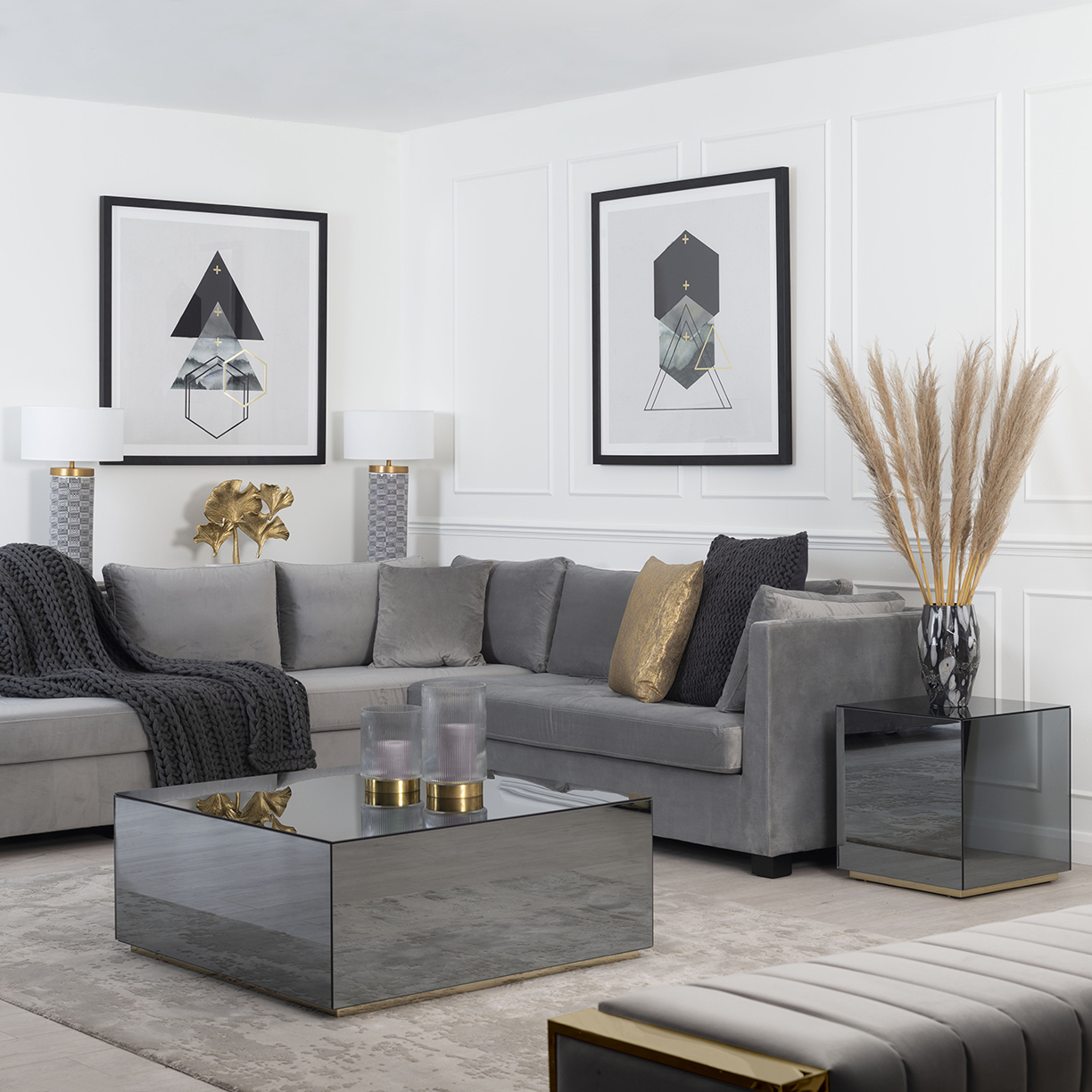
Increased social distancing and personal appointments have proven to fare well for MY Furniture, with the changes resulting in a 30-percent increase in online business and an increase in older customers shopping online who previously would not have shopped this way. With new adaptations like virtual shopping and private appointments becoming the norm, customers can rest assured that furniture shopping can effectively be a safe, enjoyable experience.
Photos courtesy of MY Furniture
On tablescapes, in kitchens and baths, garden and great rooms, green seems to be having a moment.
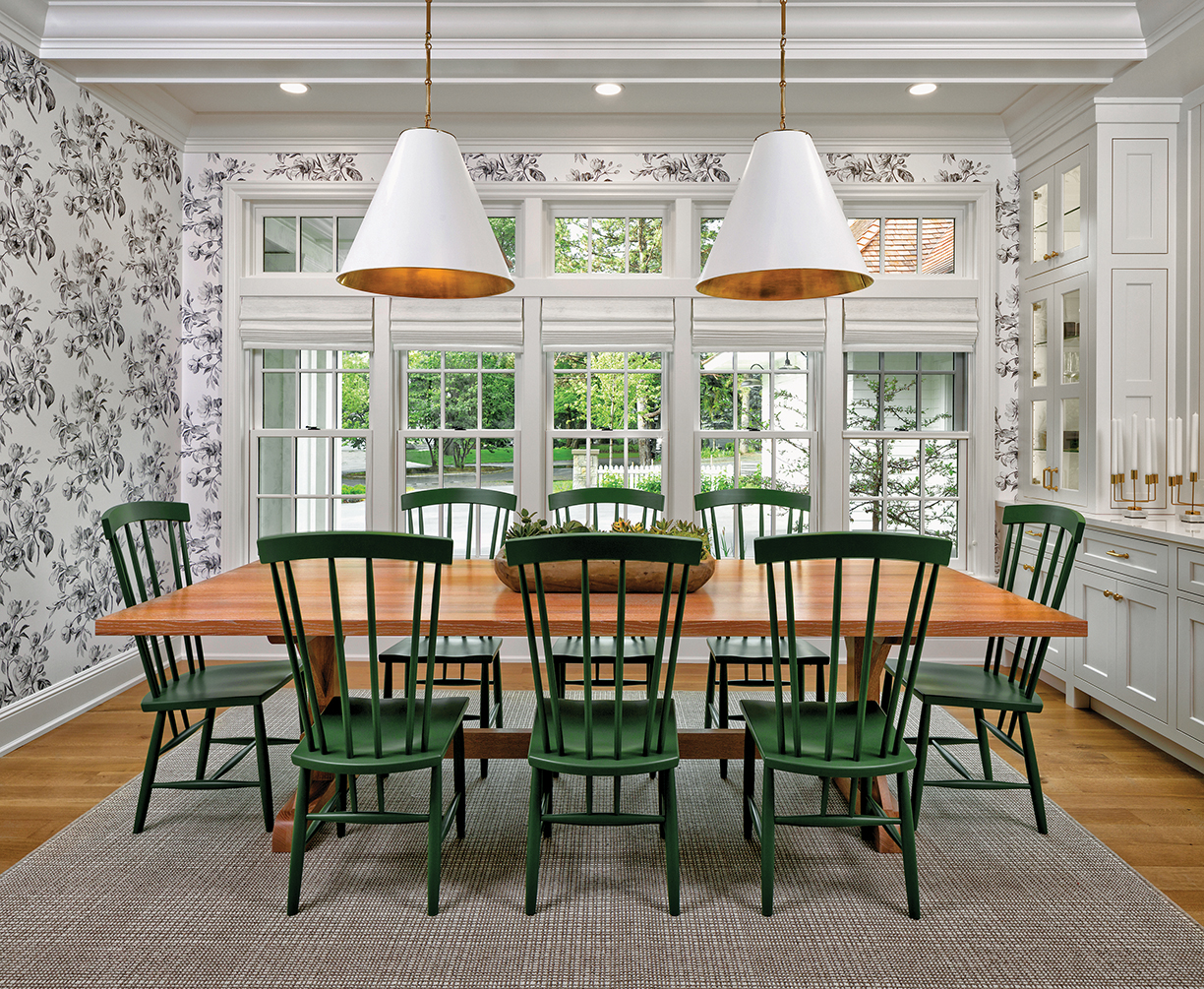
Photo courtesy of marvin Windows and Doors
Extensive windows and doors link to greenery outside and bring nature inside.
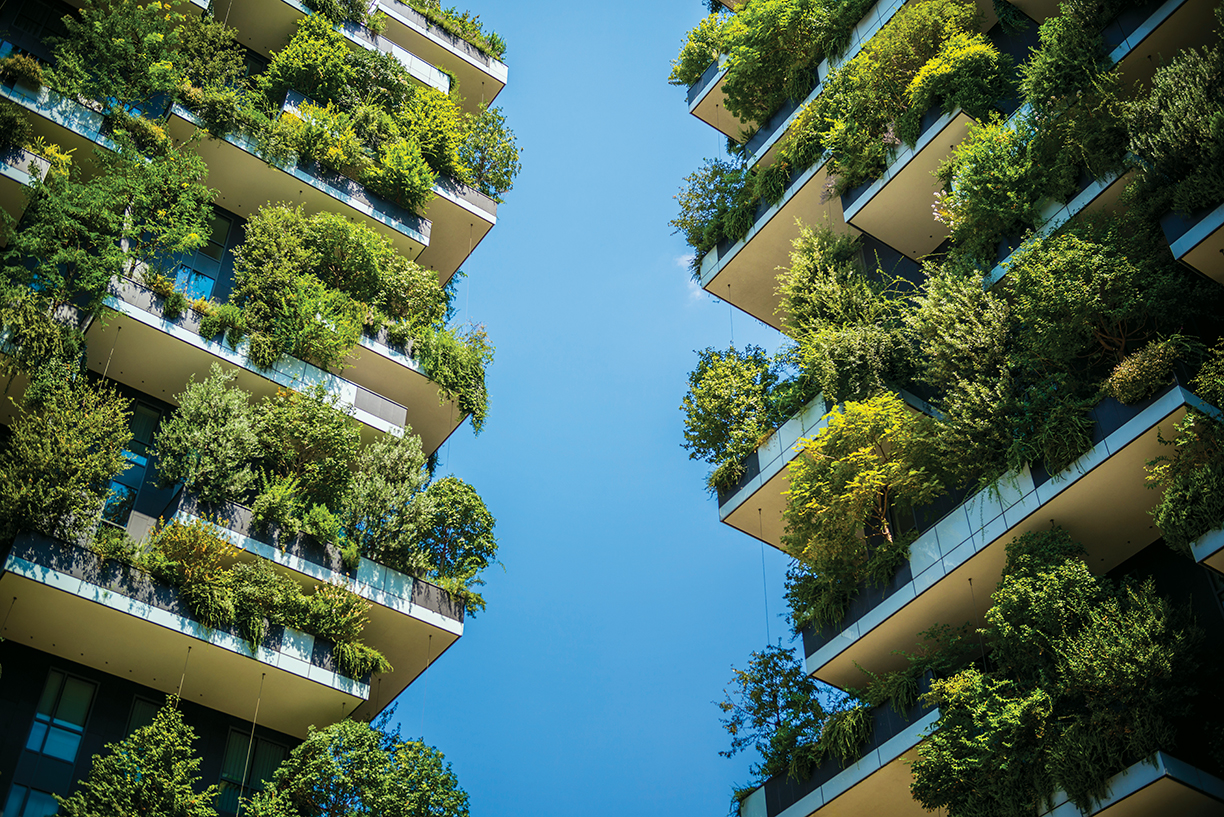
©istockphoto.com / martinwimmer
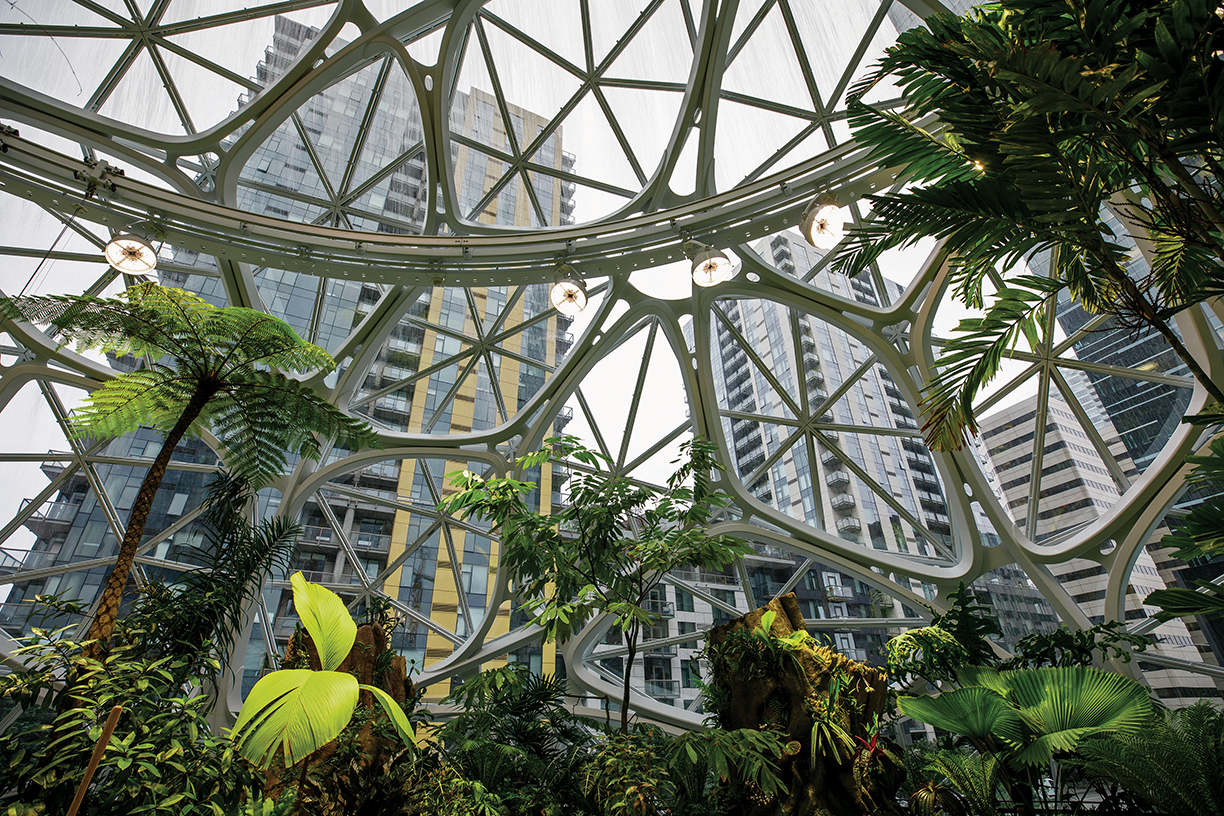
Photo JORDAN STEAD / Amazon
Not too long ago, it was difficult to spy even a vestige of green in a room. Today, it’s almost impossible to find new interior scheme without a spark of green. “We’re seeing emerald green used on everything from walls to cabinetry to tile and even lighting,” observes Sue Wadden, director of color marketing at Sherwin-Williams.
Green hues, especially deep vibrant shades, seem to be everywhere along with living greenery and plants. But rather than a fleeting color preference, the passion for green might also be the first sprouts, indications of a more transformative movement — biophilic design — edging into residential design and architecture.
Biophilia, according to consultants Terrapin Bright Green, refers to humankind’s innate biological connection with nature. Although social psychologist Eric Fromm first coined the phrase “biophilia,” the concept wasn’t popularized until the 1980s when biologist Edward O. Wilson took up the mantle. Biophilic design introduces natural elements, organic forms, light and water into the built environment. Research shows integrating natural elements increases productivity, enhances creativity and improves mental health. “We’re getting evidence-based design, especially in the healthcare industry, that just by having a view of the outside a patient recovers quicker and requires less medication and attention after surgery,” observes Miami designer B. Pila.
“The use of green in home interiors is picking up steam,” explains Stephanie Pierce, director of design for MasterBrand Cabinets. “There are a variety of shades cropping up today, particularly in the kitchen and bath from deep emeralds to soft sages and dark ivies. Deep, moody hues are making a bold impact on these spaces. The effect is as cozy as a warm blanket.”
“Touches of rich, verdant green can make it feel as though you’ve escaped to the outdoors and are soaking up the invigorating effects of nature — without even leaving your home,” shares Wadden.
“With the growing interest in wellbeing in all aspects of our lives, including the home, people are using nature-inspired lush greens to bring comfort into spaces,” explains Christine Marvin, director of corporate strategy and design at Marvin Windows and Doors. “Emerald green is a bold color that perfectly balances glamour with calmness, evoking a sense of relaxation and inspiration.”
Three spherical conservatories forested with more than 40,000 plants and trees allow Amazon employees to work while surrounded by nature.
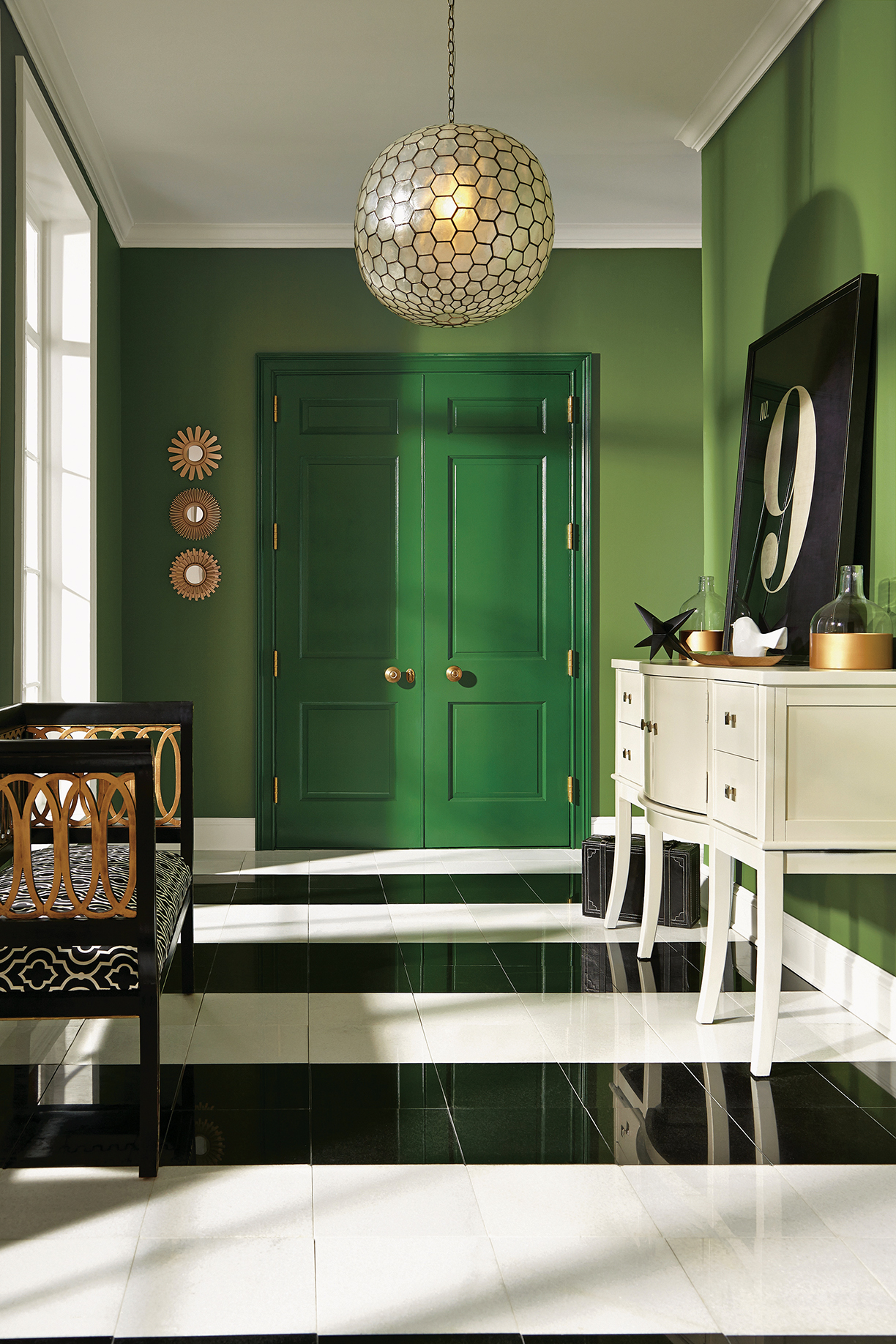
Photo courtesy of sherwin-williams
Green, whether an accent or main course, is a mainstay on design menus.
Until recently, biophilic principles were utilized primarily in commercial structures, and the inclusion of nature — living plants, park-like oases, organic forms, natural materials including wood and stone, water and light — is revamping corporate settings including Amazon, Apple and Google. Last year, Amazon’s long-awaited biophilic project, The Spheres, opened on the site of its original headquarters. The three glass and steel domes are forested with more than 40,000 plants. Along with plants and a four-story-tall green wall, there are waterfalls, a river, walkways and meeting spaces. Hotels and other commercial spaces are implementing biophilic design practices but with more modest expressions.
For residential buildings, the addition of natural elements and connections with the outside has been an ongoing evolution, partially in response to consumer attitudes rather than a dedication to biophilia. Designers are just catching on. “Consumers are more educated in wanting healthier lifestyle choices,” says Angela Harris, creative director and principal of TRIO, an award-winning interior design firm in Denver.
Current residential design merges indoors and out, organic and humanmade, using visual and real connections. The integration of outdoor spaces is a response to consumer lifestyle demands, but the end result potentially delivers the cognitive, psychological and physiological benefits biophilia advocates tout.
“We’ve noticed an increase in demand for bigger windows over the past five years, as more people want to feel connected to the world around us while we’re indoors,” comments Marvin. “In a world that’s become fast paced and where our living and workspaces are merging, letting light in allows us to feel alive and connected to space outside our homes. Incorporating large windows into the home plays a significant role in achieving this ‘outdoors in’ feel and connecting to nature. We’re also seeing a pull towards large window walls, or many windows that are mulled together to create a wall of light that heightens the experience of light in a home.”
It may seem biophilia is just another quick moving fad, but more than one organization is promoting the concept and actively formulating certifications for buildings under the auspices of groups such as the International Living Future Institute, a Seattle-based nonprofit that encourages sustainable practices and wellness. In 2016, a cadre of architects, builders and researchers formed the Biophilic Design Initiative to further the movement. Biophilia is also part of the U.S. Green Building Council’s WELL Building Standard.
Whether or not biophilia will exert a long-term influence on design remains to be seen, but there is a good chance wellness and nature will be an important aspect of design’s new normal.
It’s time to start thinking about resolutions. The new year is the perfect time to make changes and create a fresh perspective. Follow these 3 tips from Rebecca Snowden, Interior Style Advisor at Furniture Choice, for more mindful living in the new year.
Everything is fast, easy and digital, yet natural instinct pushes us to disconnect and slow down to regain our sense and quality of life.

1. Start with a clean and calm neutral palette
Begin the year refreshed and rejuvenated with the help of a home environment that focuses on living well.
Start by introducing a quality of softness into the home, coupled with interior design that’s comforting and inviting. “Let the intention of creating a clean and soothing ambiance guide your design decisions,” advises Rebecca. “Ultimately, the goal is to create a personal haven you’ll love going home to relax in.”
Make it a priority to get plenty of good quality sleep. In the bedroom, an oatmeal fabric bed presents the perfect starting point in a space meant for restful slumber. Introduce neutrals in varying tones for interest and depth. Safe, perennial hues to try to include white, soft grey and the recently popular greige.
Select comfortable bedding with minimal prints to focus on creating an uncluttered, restful environment. Where possible, go with furniture that features curves and organic lines instead of sharp, straight edges.

2. Nature is nurturing
Nothing relaxes the mind more than being surrounded by nature; particularly, plants. Start the year on a green note by maximizing on the benefits of having indoor plants. Choose a mix of large and small greenery and varieties that help clean the air. Leafy, trailing plants also inject a little wildness to create a tropical-inspired ambiance.
Besides making the air fresher, their lush green color is soothing on the eyes after a long day of working with screens.
To continue the natural theme, pick furnishings made with materials like wood, rattan, or clay. “The warmth and rawness of their surfaces contribute to a design that has a soothing, back to nature vibe,” says Rebecca.

3. Dedicate a corner for conscious relaxation
As a reminder to make wellbeing a priority for the year ahead, allocate a corner that’s dedicated to relaxation. “A little nook will do; you’ll only need enough space to practice your preferred stretches,” says Rebecca. For meditation and stretching exercises, fit it out with a yoga mat or thick rug. “And if you have a work desk at home, it’s a good idea to carve out a zen zone within the same room for quick stretch breaks.”
Maintaining the same neutral palette, style the space in light hues, and include plenty of plants. Another factor to consider is the accessibility of natural daylight, as it can help reset a confused circadian rhythm. A wellness-inspired space that embraces disconnecting and being present will likely become a favorite spot in the home.
Photos courtesy of Furniture Choice Ltd
Unique Homes sat down with the owner of Firefeatures, Elena Colombo, a sculptor whose biggest inspiration is nature, to discuss how this inspiration shines through in her one-of-a-kind designs.
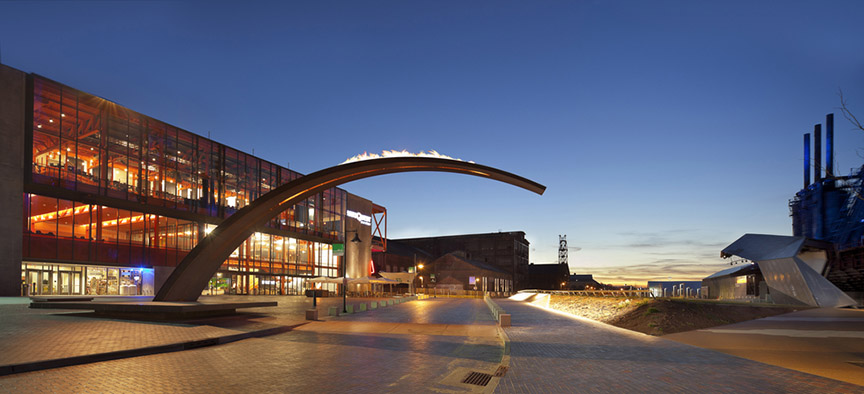
Was there a particular moment when you knew you wanted to be an artist?
I believe I always knew I was an artist and designer — from the time I was a toddler, I was always making something. Making flower necklaces, building dollhouse furniture, making a background painting for my fish tank, making mobiles, etc. I studied architectural drafting in grade school and high school and went on to study art history and fine arts in college. Art has been with me since I was born.
I want to be clear; I’m not a fine artist in the true sense of the word. My art is not solely for art’s sake. I do not make things that are purely for looking at and pleasing the viewer, though that is integral to their success. I design sculptural yet functional gas appliances. I call it “art that works.” Everything I have done in my life for work and pleasure has been to put an idea or feeling into visual form.
My father was a builder and contractor while my mother was a naturalist and placemaker. They both built/created places where people and families could thrive, whether it was building a library, planting a garden, or choosing a comfortable yet beautiful chair to sit and read in. I grew up in a nurturing environment where we were encouraged to create and solve problems. I want my work to create a beautiful place where people gather to commune with each other and fire is the medium — and it’s second to none in that regard.
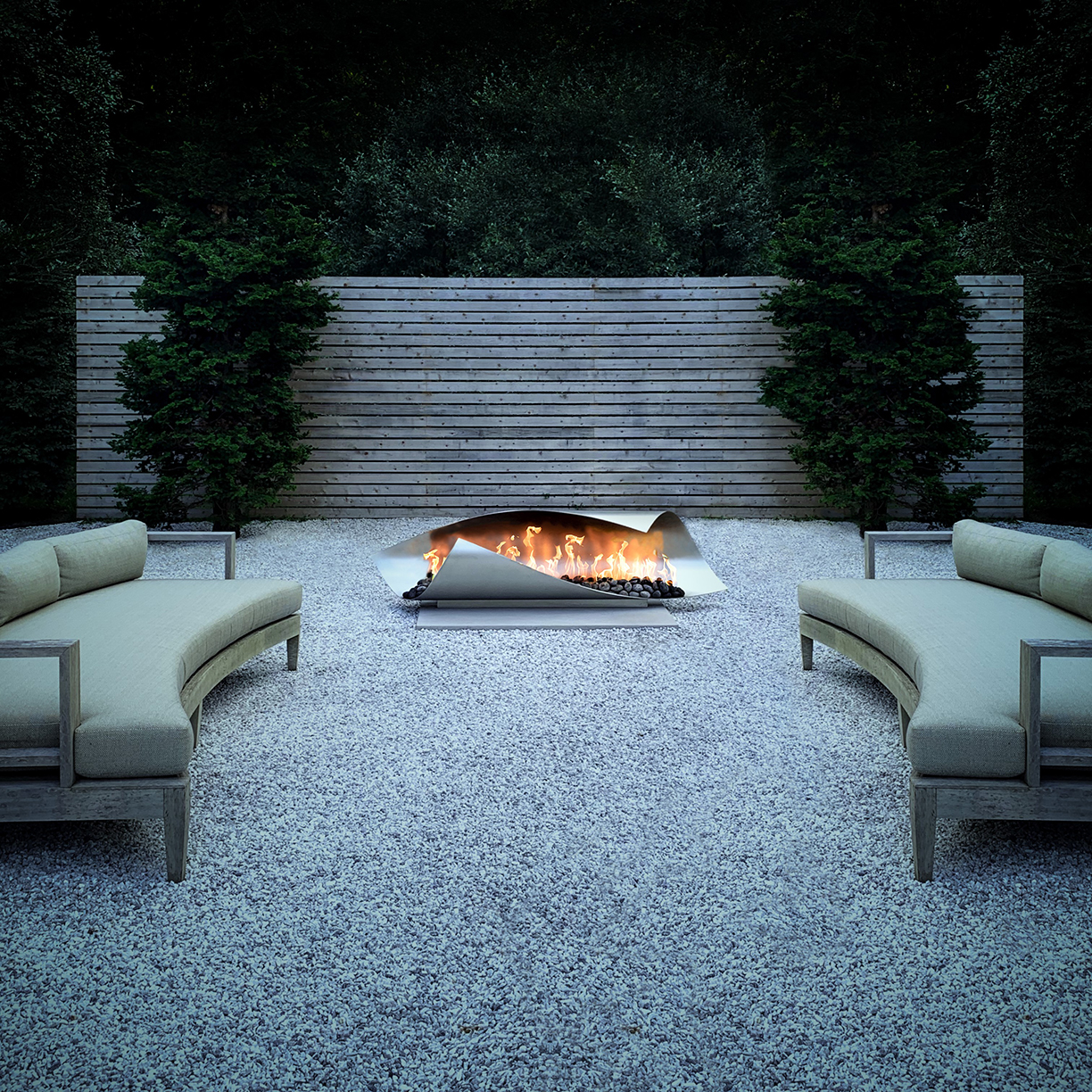
How would you describe your style?
I hope, at its best, it is a clear abstraction of nature. Because I make a product that is specifically a gas appliance, I am bound by requirements and restrictions that pure fine art is not. The form follows function in my case, so the style has to be clear, pure, and functional.
How has your style changed over the years?
It’s gotten more focused, so I imagine it’s become more minimalist.
If you had to describe your works in three words, what would they be?
Clear, pure, and functional.
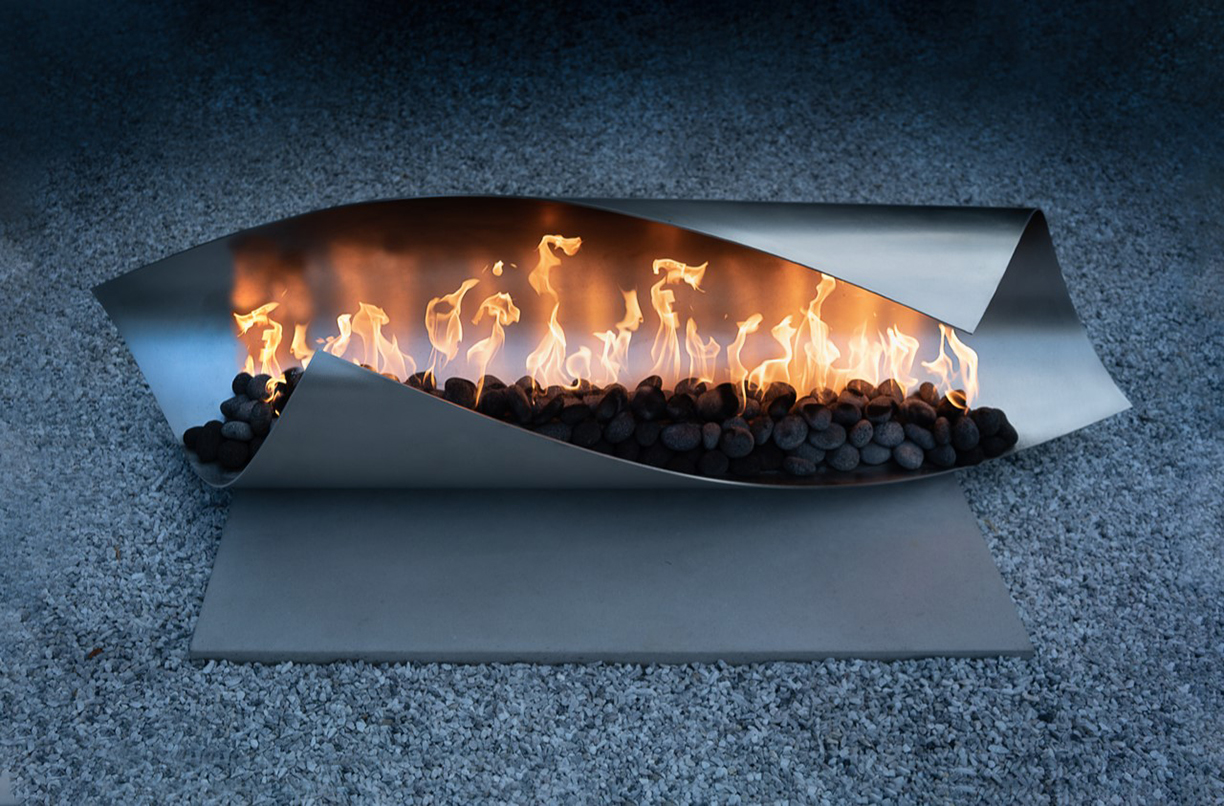
How does fire influence your projects?
It is the thing for which I create. My work is essentially a vessel to contain the fire and allow it to burn safely. The shape of the vessel can dictate how the fire moves, or the movement of the fire can dictate the shape of the vessel. The bowl was my first choice to hold fire as it is the simplest shape, and allows the fire to be the star.
How do you begin a project?
With a small quick sketch on paper, then translate it into 3 dimensions with Nic Spitler, our Head of Design. We work in Rhino which is a 3D modeling program and a very lithe program. It allows you to create, change and morph easily as you work out the ideas. I couldn’t do it without Nic — he’s extremely fluid with Rhino and our instincts are similar.
What is your favorite project and why?
The Bethlehem Bridge Project. It was a commission awarded by ArtsQuest and the National Endowment for the Arts in response to an RFQ for the Bethlehem placemaking initiative. And I just feel like I got it right. I am proud of it and it functions for the people of Bethlehem and for visitors from around the world.
What is your dream project?
A large-scale civic project in Manhattan perhaps, and to get further into design for end of life memorials and reliquaries.
Can you tell us what you’re working on right now?
Right now are two big jobs with multiple fireplaces, both interior and exterior, for 2 residences, one in Southampton and one in Greenwich, CT. The Southampton house will have a series of cast bronze pieces I’m really excited about — one has a log cradle made from a singular piece of tree bark we cast in bronze, with an entire driftwood looking surround cast in concrete. It’s an intricate mold process we will be beginning in the new year.
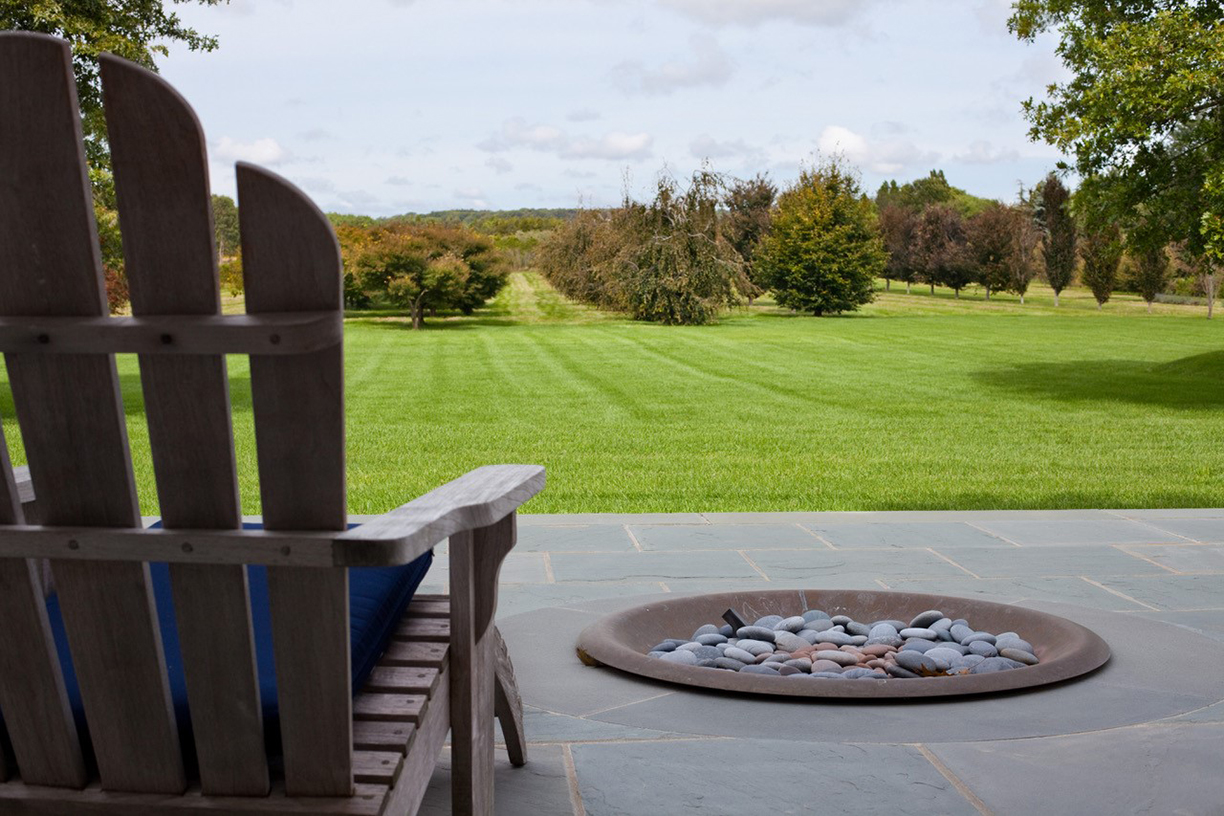
What is the biggest challenge when it comes to sculpting?
Coming up with a good idea and then executing it!
Actually, sometimes it’s just moving these heavy objects around — you tend to forget about that when you’re in the creative process — moving big metal things encompasses a lot of shipping and installation details you have to consider when designing the piece.
Photos courtesy of c/o Firefeatures
For those who are looking to find more storage for their clothes and accessories, or those who simply want to elevate the style of their home, look toward making the dream walk-in closet. Not only can it be practical by offering ample storage, but it can also be a reflection of your style, so don’t forget to make it yours. Here’s how:
1. Sleek, Organized Design
When it’s completely organized, having all your clothes on display can add vibrant color and a beautiful composition to your walk-in closet. But practically, it can be a challenge to keep the storage space that organized all the time. So instead, look toward stained cabinets with a matte finish. Use gold to add a pop of color and a simple design for a sleek finish.
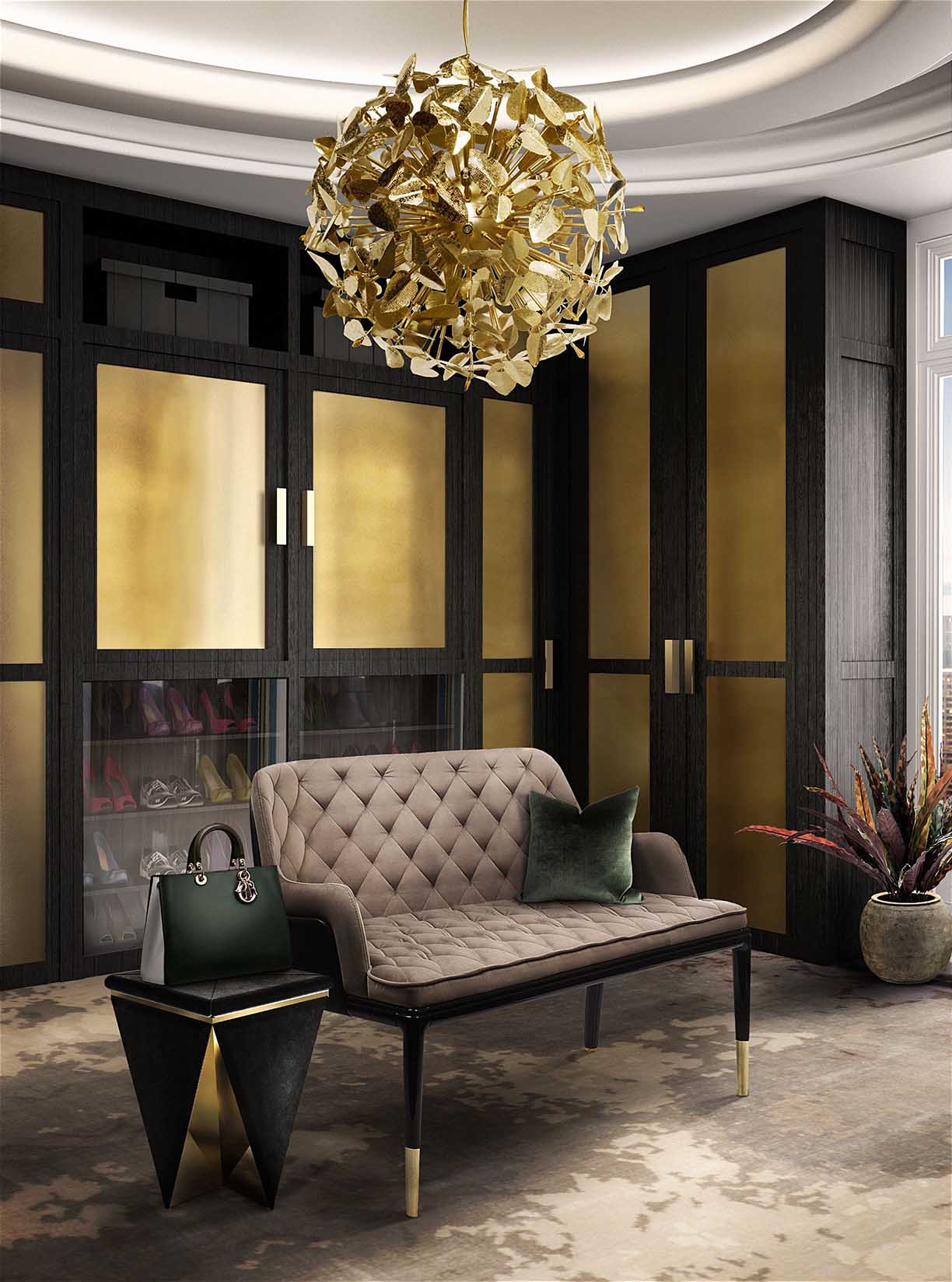
Photo courtesy of LUXXU Home
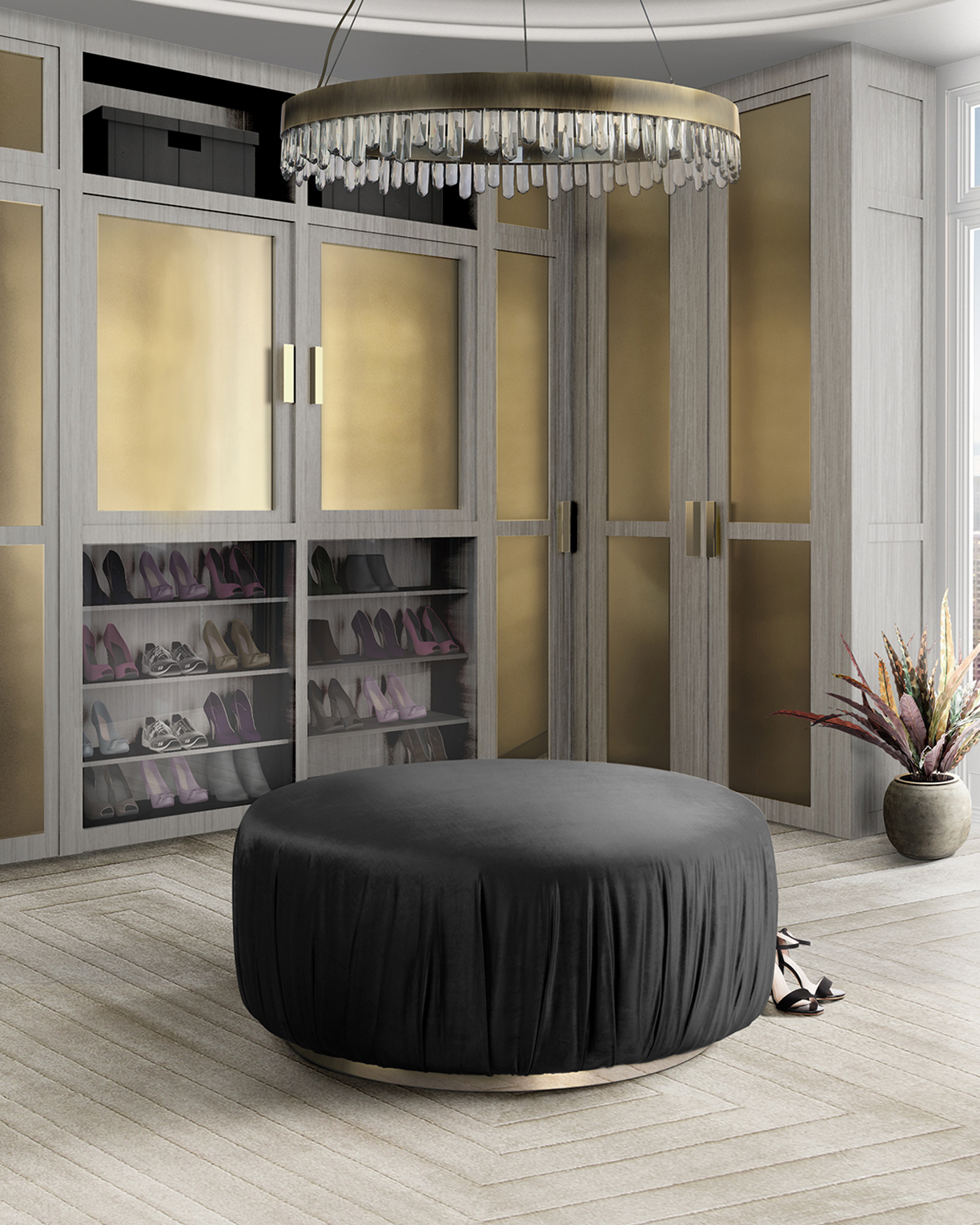
Photo courtesy of LUXXU Home
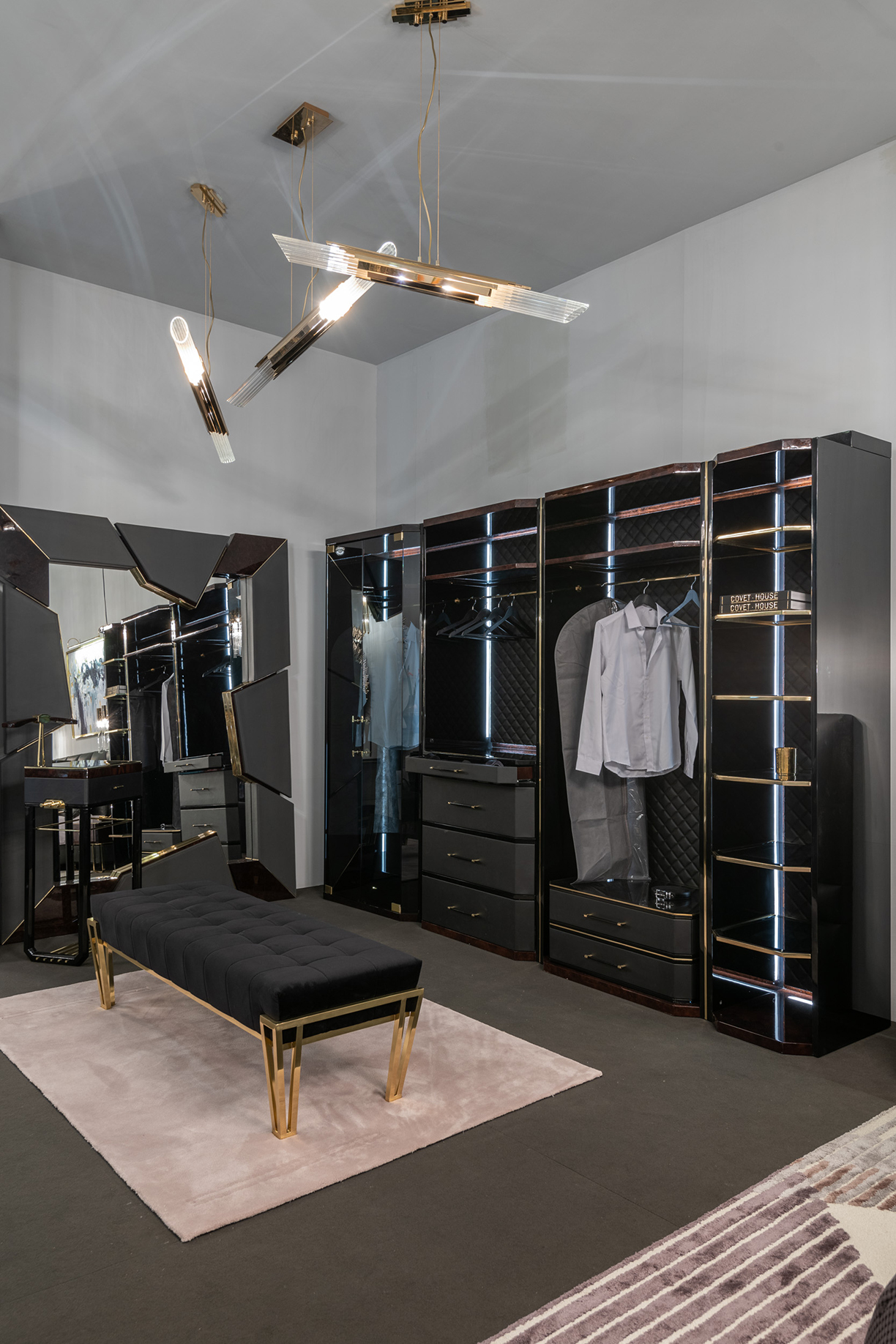
Photo courtesy of PullCast
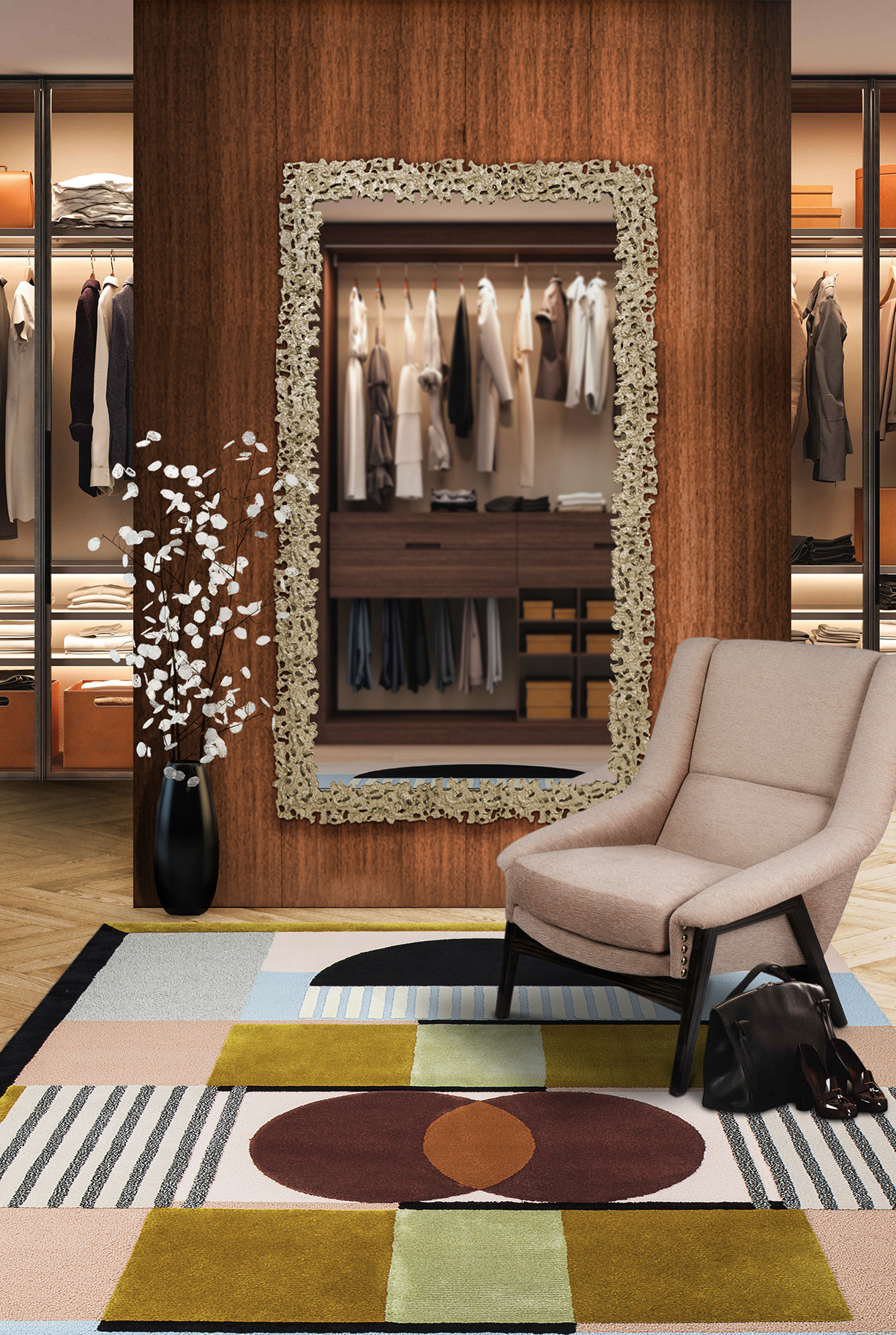
Photo courtesy of Brabbu Designs
2. Not Just a Closet (seating, too!)
When you have the space, add in comfortable seating as well. Not only does it elevate the luxury-end of the design, but it functions well when changing or putting on shoes. Add a comfortable bench or chair for the same effect.
3. Effortless Impact
When designing a walk-in closet, there’s one word that’s a must: effortless. Whether it’s more monochrome or vibrant in color or more spacious or closed off, let the room be yours. Let it reflect your personal taste — both in fashion and design.
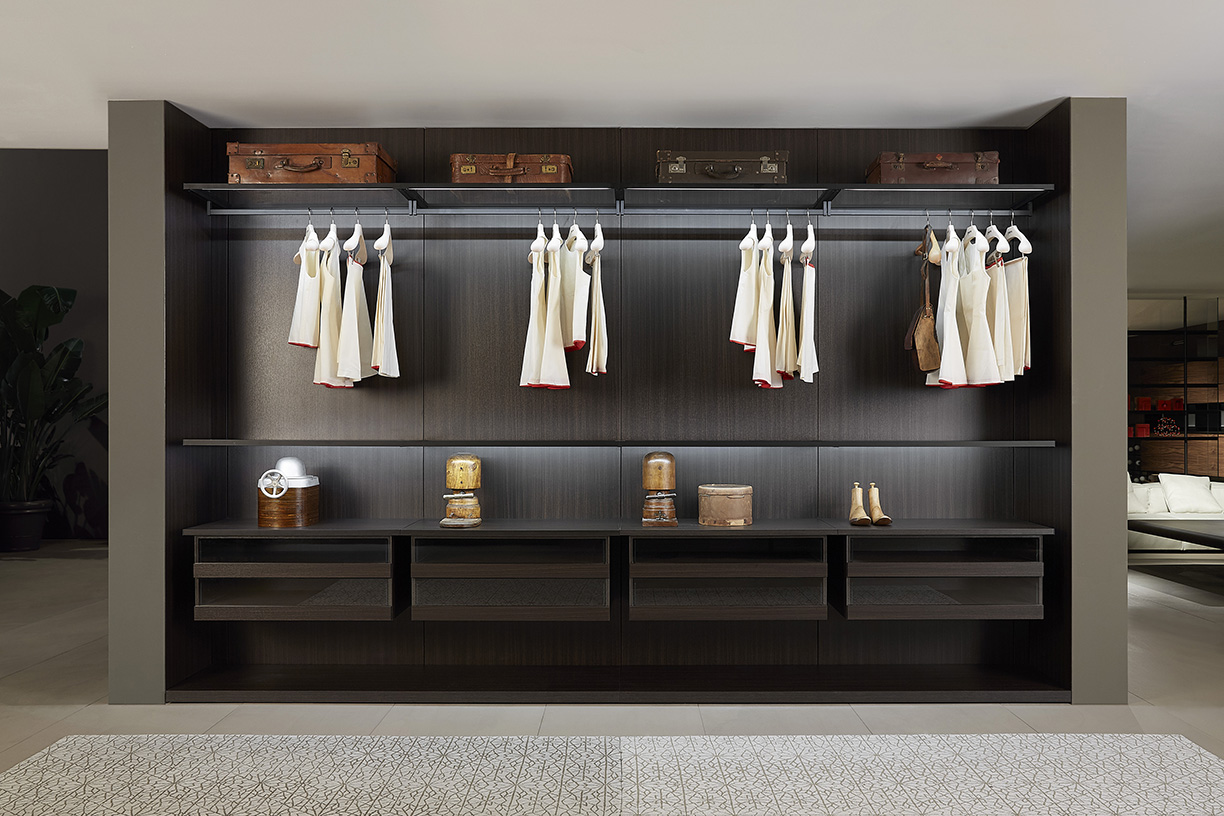
Photo courtesy of Chaplins Furniture
As the first impression a visitor receives, the front door is arguably one of the most important pieces of your home. Whenever you’re rushing to get out the door, walking back in from a long day or inviting guests in, the front door should be a reflection of you and your style.
For a bolder style, look toward a deep blue colored door like this. The clean lines and bold colors are sure to turn heads. Add floor-to-ceiling glass panels on the sides to create a sleek and stylish look.
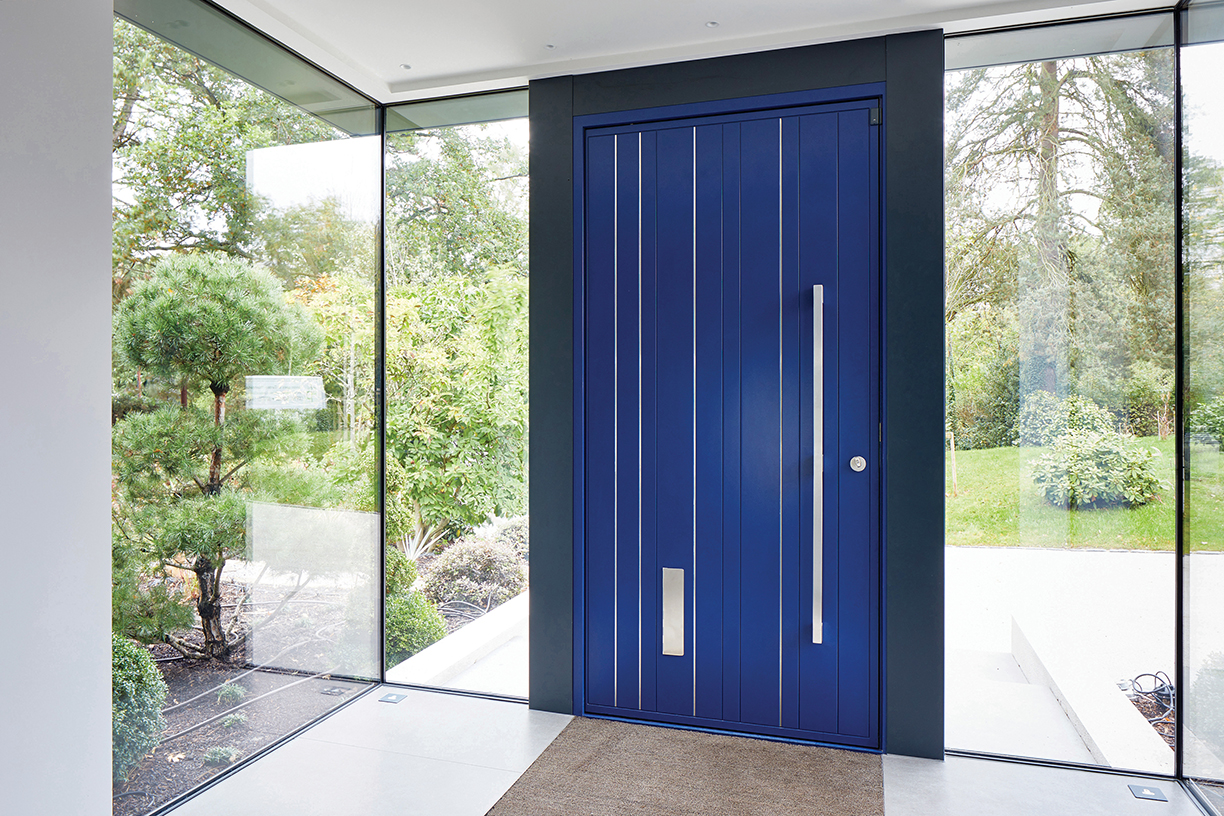
Photo courtesy of Urban Front
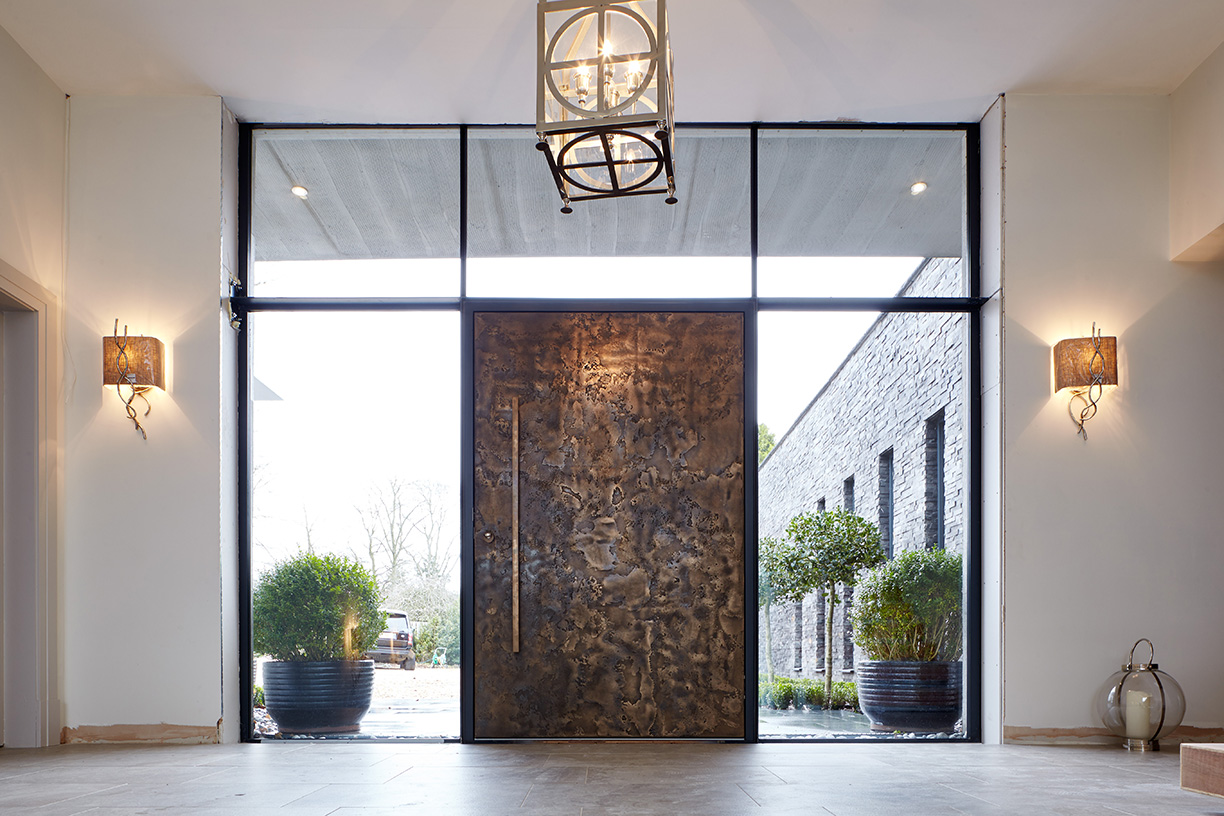
Photo courtesy of Urban Front
The glass around this front door also works to bring a modern flair. Both doors are conversation pieces for the home, inviting you and your guests in.
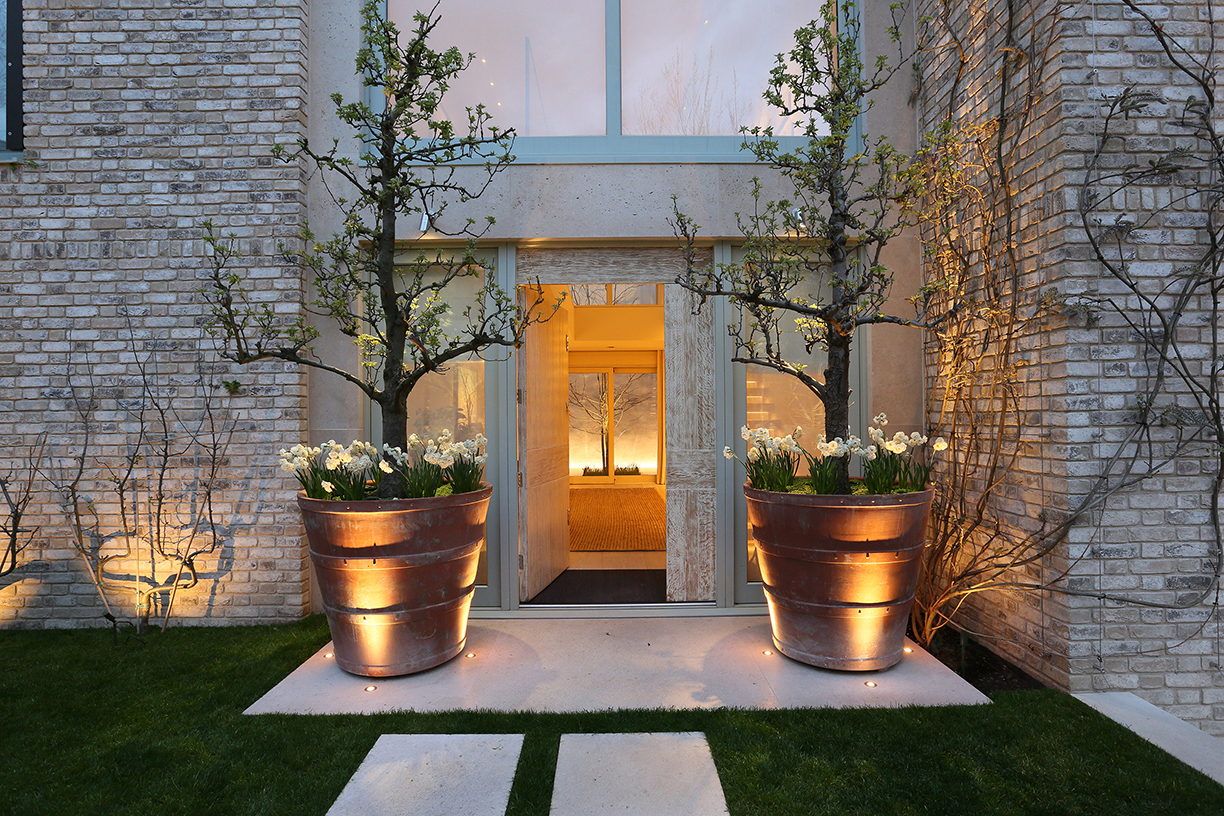
Photo courtesy of John Cullen Lighting
For a more comfortable and warm approach, look toward different materials and textures. This rustic wooden door establishes an inviting atmosphere, and the dramatic lights add a striking feature. The distinctly modern approach paired with the rustic wood creates the perfect balance.
Another way to find a door with a more relaxed style is in its colors and simple design. The recessed doorway draws attention to the simplicity of this home. The light fixtures and the paneling complement each other on their simplicity. Meanwhile, the neutral colors brighten the exterior on a sunny day and complement the hues on a rainy day, too. This stoop is sure to invite you in.
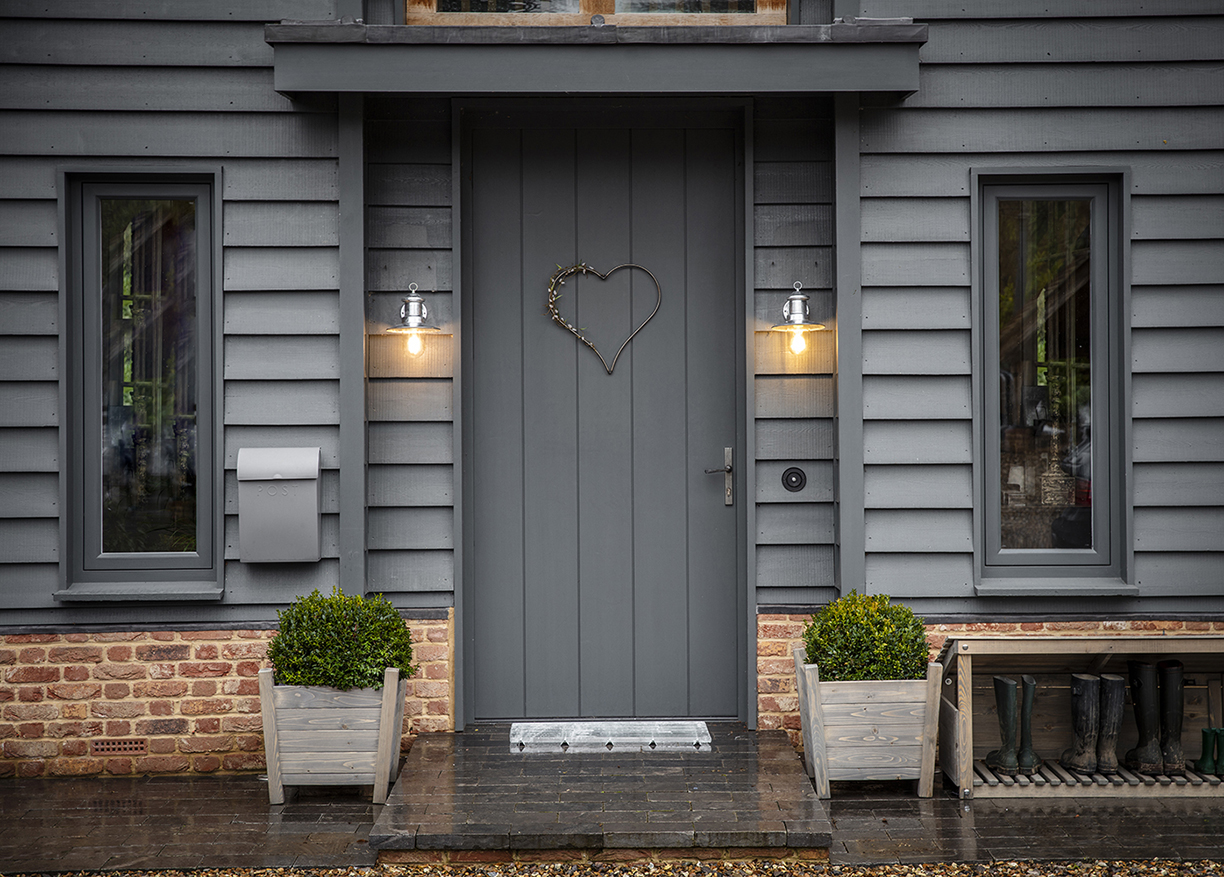
Photo courtesy of Garden Trading


